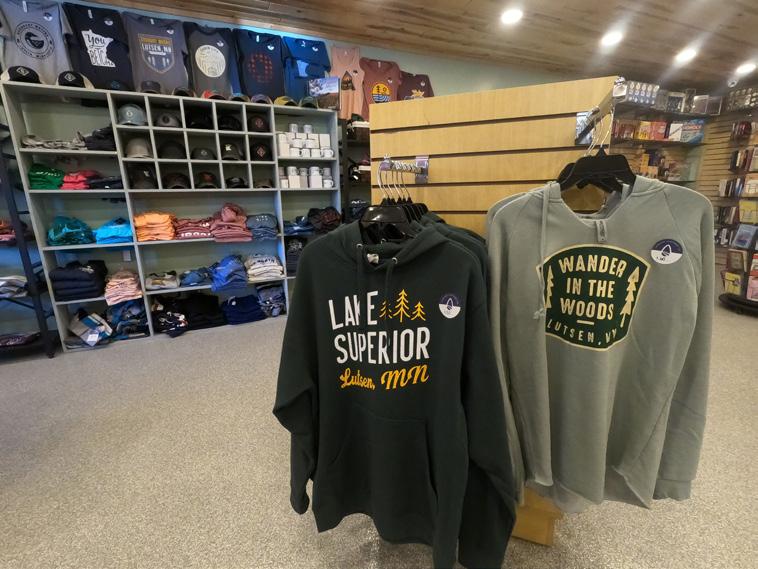
























Share Your Thoughts
Do you have a question for one of our writers? Or an interesting photo, recipe, or story you’d like to share with Northern Wilds? Please send it to storyideas@ northernwilds.com.


























Do you have a question for one of our writers? Or an interesting photo, recipe, or story you’d like to share with Northern Wilds? Please send it to storyideas@ northernwilds.com.
Over the last two months, I’ve been saying that spring is on the way, if not already here. In fact, last month I titled this piece “Welcoming Spring,” and I wrote about how icicles were melting outside my window as I typed—and the very next day, we got a snowstorm. I feel like I’m to blame for that—sorry!
It is so hard to predict when spring will arrive—and stay—on the North Shore. However, it’s May, which means spring should be here for good now, right? Let’s hope so. Either way, this issue is all about plants, because sooner rather than later, the grass and leaves will be turning green, flowers will bloom, and gardens will be tilled. I know I can’t wait to dig into my flower beds and start planting.
Let’s start with our first feature story, where Dana Johnson breaks down everything you need to know about gardening in the Northwoods. From what to plant, how to plant, and planting for the future, to hardiness zones and climate change, and ecoregions and native planting, Johnson has all the information you need.
In Along the Shore, Anne Graybeal introduces us to Alisa Berns, owner of Taproot Landscaping in Grand Marais. Berns works with numerous businesses and clients and will be working on a project for the Grand Marais Art Colony this summer. Also in Along the Shore, Naomi Yaeger takes us across the border with Rooted in Heal-
ing, a small Thunder Bay herbal business owned by Gwen McCrone.
Next up is our Creative Space column, where Rae Poynter interviews rosemaler and painter Tara Austin, whose work is rooted in nature. Austin’s work is grounded in the Gudbrandsdal style of rosemaling, which is characterized by the acanthus leaf. She can be found teaching rosemaling classes at places like the North House Folk School—including a class on rosemaling 10 different plants of the boreal forest.
Of course, not everything in the issue revolves around the theme. In fact, Kalli Hawkins provides us with an Along the Shore story on the Anderson family in Grand Marais and their creative vacation tradition: Whichever U.S. state quarter appears most in their coin jar becomes their summer vacation destination. This year’s destination is Texas. Their goal is to eventually visit all 50 states.
Erin Altemus writes a feature story on how beavers build a more resilient ecosystem—helping with flood mitigation, preventing droughts, and creating species diversity. She’s also got some pretty neat facts sprinkled within the story—did you know a beaver can stay underwater for up to 20 minutes at a time?
There’s more to unpack, but I won’t give it all away. And in between reading stories, be sure to welcome back spring, again.—Breana Johnson





PUBLISHER/CEO
Barb Krause bak@ntmediagroup.com
PUBLISHER EMERITUS
Amber Graham
EDITOR
Breana Johnson editor@northernwilds.com
ADVERTISING
Sue O’Quinn sue@northernwilds.com
ART DIRECTOR
Lauren Harrigan lharrigan@ntmediagroup.com
GRAPHIC DESIGN
Jessica Jacobsen Smith production@northernwilds.com
DIGITAL DIRECTOR
Kristen Rouse krouse@ntmediagroup.com
OFFICE
Barbara Fisher office@northernwilds.com
Nadine Seitz accounting@ntmediagroup.com
CONTRIBUTORS
Erin Altemus, Elle Andra-Warner, Gord Ellis, Virginia George, Anne Graybeal, Kalli Hawkins, Dana Johnson, Michelle Miller, Deane Morrison, Hartley Newell-Acero, Chris Pascone, Rae Poynter, Joe Shead, Naomi Yaeger, Sam Zimmerman
Northern Wilds magazine is a publication of Nei-Turner Media Group, Inc. Gary E. Nei, Chairman; William Turner, President; Barbara Krause, Publisher. No portion of this magazine may be reproduced without prior written permission by the publisher. ©2025 Nei-Turner Media Group, Inc. All rights reserved. Prepress services and printing by Forum Communications, Detroit Lakes, MN.
Unsolicited material must be accompanied by return postage. Northern Wilds magazine assumes no liability for damage or loss.
Nei-Turner Media Group, Inc 400 Broad Street, Lake Geneva, WI 53147 262-729-4471
Grand Marais Office: 1708 W. Highway
55604











TWO HARBORS—Celebrating a 100-year anniversary is a big deal, and the Lake County Historical Society (LCHS) is hitting that milestone in November. Several events are being planned throughout the year in Two Harbors to mark the organization’s centennial.
A highlight will be the re-lighting of the historic lighthouse in Two Harbors. The original beacon burned out in 1920. The restoration and installation of the iconic beacon has been years in the making, and after raising more than $30,000, it will once again shine over Agate Bay. A grand ceremony is planned for July 4 and will take place at dusk, before the city’s annual fireworks display. A free concert will kick off the evening at the Depot’s outdoor landing overlooking Agate Bay.
The LCHS had been leasing the lighthouse from the U.S. Coast Guard since 1988. In 1999, an act of Congress officially turned the landmark over to the organization. There has not been a paid keeper on site since 1991.
“We have been extremely fortunate to have skilled volunteers who have worked with the Coast Guard to have a temporary, smaller beacon,” said LCHS Board President Sam Gangi. This has enabled the lighthouse to continue to be a private aid in navigation for shipping traffic into Agate Bay.
The Lake County Historical Society was established Nov. 25, 1925, with the mission to “collect, preserve, and disseminate information about the County of Lake and its surrounding environs.”

Listed on the National Register of Historic Places, the Two Harbors Light Station is one of three historic sites operated by the Lake County Historical Society.
COUNTY HISTORICAL SOCIETY

In June 1960, the society opened its first displays inside the Two Harbors Depot and now owns and operates two additional historic sites in Two Harbors. The Minnesota Mining & Manufacturing Company, now known as 3M, is a museum listed on the National Register of Historic Places. As part of the centennial celebration, the 3M exhibit space has been redesigned to showcase the company’s 100-year history.
The LCHS also owns and provides tours of the lighthouse, keeper’s house, and grounds at Lighthouse Point, near the public boat landing and breakwall. The Lighthouse Bed & Breakfast has been open for guests year-round since 1999, helping provide financial support for the preservation of the LCHS buildings and surrounding property.
The LCHS is a private, nonprofit 501(c)(3) organization. Although it receives a small stipend from Lake County, it is not a county entity. The society is also affiliated with the Bay Area and Finland historical societies, partnering on funding and programming opportunities.
“We have done a pretty good job sustaining ourselves for the past 100 years,” Gangi said.
A popular piece of the LCHS collection at the Historic Railroad Depot is the Yellowstone Mallet steam engine. It was donated to the society in 1969 by the Duluth, Missabe & Iron Range Railway and placed on perpetual display next to the Depot. It was restored in 2011 with a federal transportation enhancement grant administered through MnDOT and supervised by the Lake County Highway Department.
Railroad enthusiasts from across the country say it is the most complete and original restoration of its kind, staying true to its historical design. Local historian Todd Lindahl was instrumental in the project, lending detailed knowledge— from the correct shade of paint to the accurate letter fonts.
In addition to managing museums and historical collections, the society offers a variety of community programs. The summer concert series at the Depot highlights local musicians. History in a Pint presentations feature a variety of topics relevant to local history, and author talks and membership socials are also hosted throughout the year. The LCHS also partners with the library to bring specialized science, technology, engineering, mathematics (STEM) classes to the 3M location. The full lineup of 2025 events can be found on the LCHS website and on social media.
The Depot and lighthouse sites include gift shops that offer educational and regional materials, with staff and volunteers available to answer visitors’ questions.
Gangi says the society’s goal is to build awareness of the work the society does and “bring people into the fold to join us in programs and learn what the LCHS stands for.”
The Two Harbors Historic Depot Museum is located at 520 South Ave. and is open daily from 10 a.m.–5 p.m. Tickets for all three sites are available, along with maps. For more information, call 218-834-4849 or visit: lakecountyhistoricalsociety.org.— Michelle Miller



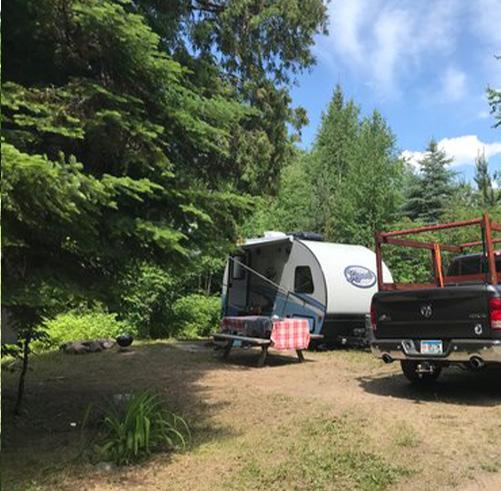



GRAND MARAIS—Alisa Berns’ journey with plants spans the continent. From Iowa’s driftless region to the Alaskan taiga to the northern lakes and forests of Cook County, her work with plants has always been informed by a deep connection to place.
The founder of Grand Marais-based Taproot Landscaping, Berns grew up in northeastern Iowa “surrounded by earth and sky.” Berns was enamored by nature from her earliest days. “I spent a lot of time observing nature, being comforted by it, feeling like it was a companion.”
Berns matriculated at University of Wisconsin-Madison as a Russian major. Even so, her interest in plants burgeoned. Intrigued, she enrolled in a botany class—twice. “I failed the first because it was so hard. It was a wake-up call. I think there’s more awareness now about how your failures actually lead to growth,” she said. Undaunted, she took the class again and passed.
Buoyed, Berns took every course she could: plant pathology, dendrology, ornithology, and wildlife ecology. “What I noticed about dendrology was that being adept at languages made me adept at Latin. We had to memorize 500 different tree species and their Latin names. That work helped launch my understanding of plant family, species, genus.”
Berns leapt at the opportunity to spend a summer in Northway, Alaska, funded by the National Wildlife Refuge. Learning from native Athabascans, she studied traditional medicinal plants.
“It was the late 90s, and I met people who were elderly, who had never been to an Indian boarding school, who spoke little English. Here were these people who had been on

this landscape for so long, who had this very intimate relationship with the land and with everything about the land.”
The experience cemented for Berns a lifelong curiosity about “how people relate to plants and plants relate to people.”
“I’m fascinated with how people have been instrumental with moving plants around the globe. People are the reason
that ginkgo survives. Ginkgo is the oldest living tree species. It’s a living fossil, millions of years old. It was on the brink of extinction in a pocket of China, but monks started planting it around monasteries, and then it started getting moved by humans. That’s the only reason it survives. There are all the ways that people have moved plants around that have been destructive, and then all the ways they’ve kept them from extinction.”
An internship in the San Juan Islands in Washington state allowed Berns to explore sustainable agriculture. She landed on the project of creating a cookbook of seasonal recipes from local growers and farmers, complemented by her botanical drawings.
Berns moved to Cook County in 2000 to embark on tenant commercial farming. Although she loved the work, she needed to make a living to support herself and her two young sons. She founded Taproot Landscaping in 2008, but recognized that she wanted a deeper study of the practice. A connection with Mila Horak led her to a landscaping position with Ron and Deb Peters of D&R Landscaping, a company that had been creating “masterful, artful landscapes” in Grand Marais for 30 years.
Berns knew that she had a lot to learn. “There’s a whole set of principles that apply to pruning: what to leave, what to take. And how to [maintain] a permanent landscape versus a vegetable garden, which is an annual landscape. You’re not plowing it under. You’re editing.”
Horak was, said Berns, “a wonderful teacher. And tough. I would weed something and she’d say, ‘Do it again.’ And I would do it again, and she’d say, ‘Do it again.’ That was really good for me.”



Berns, who grew up in northeastern Iowa, was enamored by nature from an early age. | SUBMITTED
Landscaping, according to Berns, involves a unique combination of technical expertise and intuition. “You have to really understand how to approach it, how to work with it, when to leave it. It has to do with being able to be in a landscape and really be with it. When you are, it starts communicating with you: trim this, take this away.”
Berns passed the test. When Ron Peters decided to retire, he was leaving behind a number of landscapes that the company was maintaining throughout the county. The work was elaborate: paths, walls, garden beds, terraces, ponds, bridges. With Horvak’s support, Peters told Berns that he would recommend to those clients that they contact her.
In the winter of 2011, Berns traveled to Vermont to study with the Northeast Organic Farming Association. “It was quite innovative,” recalled Berns. “They translated all the practices of organic agriculture to landscaping and created an organic land care certification program. I learned how to really apply ecological and organic principles to landscaping.”
Berns knew that she wanted to begin introducing native plants into her projects, leveraging patch ecology to create an interconnected system of installations across private land. At the time, the work was ahead of the curve. In the last five years, interest in native plantings has increased dramatically, and Berns no longer needs to convince people to introduce them.
This summer, Berns will apply these carefully honed principles of ecology and design to a project with the Grand Marais Art Colony to create a plein air classroom in an underutilized outdoor space. Noting that the area’s most prominent feature is a 100-yearold cedar, Berns has envisioned plantings to reflect the understory of a northern hardwood cedar forest.
Berns will be joined on the project by her husband Michael Waring, a licensed gen-


Taproot works with numerous businesses and clients, and will be working on a project for the Grand Marais Art Colony this summer.
| SUBMITTED
eral contractor. Hardscaping, including an ADA-compliant pathway, will begin in June, with plantings following in July and August. Taproot will also create a vined screen on the east side of the space, designed to mimic the undulating lines of the Art Colony logo.
Taproot has worked with Lutsen Sea Villas, Terrace Point, Grand Marais State Bank, Drury Lane Bookstore, and Grand Marais Public Library. Berns will return to the library in May to update and enhance the plantings that she helped to make in 2012.
Berns keeps her landscapes close to her heart. “I still take care of several properties that I’ve worked on for 16 years. I feel really grateful. It’s almost like we’ve grown up together. I was just starting, and the landscape was kind of young. The way the trees have grown in, the things that have died and that we’ve replaced, the way that everything has aged—it’s like visiting an old friend.”
Anne Graybeal

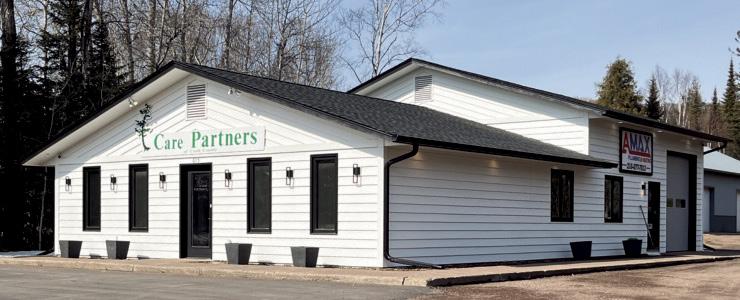



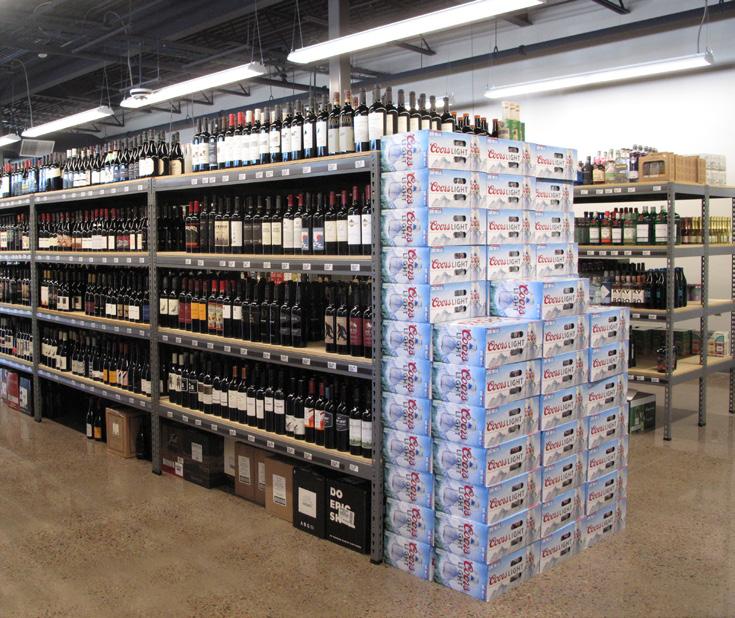






GRAND MARAIS—Every New Year’s Eve, the Anderson family gathers around the kitchen table, excited to count the collection of state quarters they’ve been saving throughout the year.
For the family of five, the coins aren’t just spare change—they’re the key to their next adventure.
Since 2021, Grand Marais residents Amanda and Lance Anderson and their three children have followed a unique tradition: whichever U.S. state quarter appears most in their coin jar becomes their summer vacation destination.
“We dump out our jar of quarters and filter through all the state quarters,” Amanda said. “And the state that has the most quarters collected, we pick for our trip.”
After tallying the state quarters and discovering which state they will be visiting in June or August, the family gets busy researching the state and various activities to do. Depending on the distance and schedule, the family plans a road trip or flies to the state and rents a car.
The clever vacation idea began in 2020 when the family of five couldn’t decide which state to visit for their upcoming summer vacation.


“We had gone to Florida for a trip, and the following year, I wanted to go back there. So, I surprised the family,” Amanda said. “And nobody was excited to go back to Florida.”
Soon after, a coin jar was placed in the living room, and the year-long collaborative family project of collecting state quarters began.
Since adopting the fun vacation idea, the family has traveled to Alabama, Virginia, and New York.
However, while the ultimate goal is to visit and explore the chosen state, Amanda said the family vacation is also about seeing as many neighboring states as possible, with the ultimate goal of seeing all 50 states in the near future.
“When we go to the chosen state, we usually hit more than one. We want to try to hit all 50. Or at least 48,” she said.
And in three years, the family has made some significant progress.

The family took a road trip to Virginia, checking off numerous Midwest states along the way. Then, for the New York trip, the family flew to Maine, rented a car, and visited all the northeastern states before flying out of New York.
“I think we’re at more than 25 states we’ve visited with just those three vacations,” she said.
Not only do the spare quarters come in handy for deciding the family vacation, but Amanda said the family saves the quarters and loose change to plan a special family activity on each trip.
“It’s usually a couple hundred dollars that we save, and it goes toward some sort of activity we want to do as a fam-
ily,” Amanda said. “Like a nice restaurant, fun place, or something that we normally wouldn’t be able to do. But we have the extra money now.”
Amanda said the entire process of saving spare state quarters, spending New Year’s Eve together choosing a trip, and then months afterward planning is a valuable learning and educational opportunity for her children and family.
Furthermore, she said that traveling to a new state, meeting new people, and seeing big cities is a “really great learning thing for all of us.”
“We love the unfamiliar,” Amanda said. “I want my kids to be okay with moving away when they become adults. Not be scared of the country, not be scared of different types of travel.”
In a few months, the Anderson family will depart on their next summer vacation, this time heading to the Lone Star State.
The family plans to road trip to Texas, visiting nearly half a dozen states along the way. Throughout the winter, they have been busy mapping out their route and researching activities and sights to explore.
“I usually make a document and then share it with the kids and with Lance,” Amanda said. “We add stuff to it collectively.”
While the final Texas destination hasn’t been chosen yet, Amanda said they are considering the San Antonio area. “We’ve heard a lot of great things.”
As the family continues planning for Texas and future state trips, Amanda

said there is one final rule the family follows each year.
“We cannot go back to a state we’ve already gone to,” she said.
Until the 50-state goal is reached, the family must creatively and strategically plan their vacation and route.
“There’s so much more thought that goes into our trip,” she said.
During their vacation, the family keeps records of where they stayed, restaurants they visited, and unique activities they participated in. At the end of each trip, Amanda said she typically has a handful of souvenirs or ticket stubs that are displayed in a shadow box frame as a keepsake.
“It’s great to have that log and to be able to go back years later and reflect on the trip,” she said. “I like having that for our family.”— Kalli Hawkins

blooms, bordered by native pollinator-friendly echinacea. The garden is nestled amongst trees. | SUBMITTED



for the goldenrod plant. Wild-harvested goldenrod is paired with home-grown calendula, St. John’s wort, and chamomile for an ultra-skin-friendly formula.
| SUBMITTED
THUNDER BAY—What began as a personal search for healing has grown—quite literally—into a small herbal business rooted in science, sustainability, and local soil.
Gwen McCrone, age 26, launched her herbal product business, Hearthstone Herbal, in 2022, not long after leaving Lakehead University and a forestry degree behind. The decision came in the wake of personal upheaval and grief: Her mother passed away from cancer in 2021, and McCrone—already questioning her career path—left school and pivoted toward something more meaningful to her.
“It was a powerful catalyst,” she said. “I wasn’t doing what I wanted with my life. Herbalism felt like a calling home.”
McCrone had long been interested in herbal medicine, sparked by her own chronic health issues and her mother’s experience with Lyme disease. Frustrated by the conventional medical system, she began exploring alternative paths to wellness.
“I was bedridden with pain at age 14, and my doctor told me, ‘That’s normal. Don’t worry about it, it will get better once you give birth,’” she said. “Even at 14, that kind of dismissal made me realize something was wrong.”
Years later, she was diagnosed with polycystic ovarian syndrome (PCOS) and finally found relief through naturopathic care, including herbal tinctures. “It made an immediate difference,” she said.
Now based on a rural property outside Thunder Bay, McCrone cultivates more than 15 species of medicinal plants in her home garden. She processes all herbs herself, favoring a technique called curing, which uses a dehumidifier to gently dry the herbs while preserving their medicinal properties. “I’ve tested air drying and dehydrating, and curing gives the best quality by far,” she said. “It’s gentle, it’s controlled, and it keeps the plants potent.”

She sells her handcrafted products—such as salves, facial serums, and bulk herbs—at local artisan markets and through her online store. While most of her customers are in Thunder Bay, she’s shipped orders across Canada and to the United States.
One of her most popular items is a deep repair facial serum, made with chamomile, calendula, marshmallow root, and wild rose. “It’s very lightweight and nourishing,” she said. “It’s the product I sell the most.”
McCrone also crafts evergreen and comfrey salves for moisturizing and body care, but she’s careful about how she describes their uses. “Because of Health Canada regulations, I can’t say something will treat a condition,” she said. “I can tell people how herbs
like calendula or comfrey have traditionally been used to support certain symptoms, but I never make medical claims.” One example she gives is eczema. “We’re allowed to say that calendula has traditionally been used to support conditions like eczema,” she said. “But I can’t say it treats eczema.”
That ethical line is one McCrone takes seriously. While she’s working toward more advanced credentials, she currently identifies as a folk herbalist and focuses on topical products and educational workshops.
“There’s a misconception that herbalism is fringe or unscientific,” she said. “But I base everything I do on understanding the chemistry of plants and how to use them properly. There’s real science behind it.”
McCrone’s approach is deeply local. She describes her work as “bioregional herbalism,” using plants native to or well-adapted to her region. She grows comfrey, yarrow, chamomile, motherwort, and calendula— among others—and forages when appropriate. “I want people to have access to fresh, high-quality herbs—not ones flown in from across the world,” she said. “When you use my products, you can smell the difference. You can feel it.”
While the business is currently part-time— McCrone also holds side jobs—it’s growing steadily. In the future, she hopes to expand her offerings and perhaps pursue clinical herbalism. But for now, her focus remains on education and access.
“A lot of what I do is about helping people unlearn the idea that herbs don’t do anything,” she said. “That’s just not true. It’s never been true.” McCrone encourages people to learn for themselves and even offers workshops on how to make tinctures and infused oils at home. Her hope is to bridge the gap between skepticism and curiosity— bringing people closer to the science and wisdom behind herbal medicine.
To learn more about Hearthstone Herbal, visit: hearthstoneherbal.ca.— Naomi Yaeger
Meet some of the plants behind the products
These are just a few of the herbs grown, harvested, and cured by herbalist Gwen McCrone on her property near Thunder Bay. Each plant has a long history of traditional use and is selected with care for its quality and potency.
CALENDULA: A bright orange flower often used in salves and skin care products. Traditionally valued for its soothing properties.
CHAMOMILE: Known for its gentle, calming nature, chamomile is frequently used in teas, oils, and facial care.
COMFREY: A large-leafed plant used topically. Sometimes referred to as “knitbone” in folk traditions.
YARROW: A hardy, fern-like herb with small white or pink flowers. Historically used for skin support and as a boundary plant in gardens.
MOTHERWORT: A member of the mint family, this bitter herb has roots in European herbal traditions. Often associated with heart and hormone support.
MARSHMALLOW: Not to be confused with the candy—its leaves and roots are prized for their softening, soothing properties.
WILD ROSE: Petals and hips from native wild roses are used for their fragrance and gentle astringency in skin care.




NORTH SHORE—Towering pines, weathered cedars, and scrappy yellow birch clinging to the ancient bedrock have long defined the rugged beauty of Minnesota’s North Shore coastal forest. The history of logging followed by devastating wildfires that burned up the logging slash left behind a barren landscape at the turn of the century. Changes in land use, development, and the arrival of whitetail deer have continued to further alter this landscape, leaving many areas with shorter-lived species like aspen, paper birch, and balsam poplar in declining forest health. But the good news? The forest is being restored, one seedling at a time, and landowners are playing a vital role in bringing back the North Shore’s iconic woodlands.

The North Shore Forest Collaborative (NSFC) has been leading the charge in this effort since its formation in 2011, working with private landowners, conservation groups, and public agencies to restore longlived, later successional forests. Much of the land near and adjacent to Lake Superior is privately owned, so providing education and resources is vital to landscape scale reforestation. Through partnerships, outreach, and hands-on restoration projects, the NSFC is demonstrating that even small landowners can have a lasting impact on the landscape. Healthy coastal forests provide vital foraging, hunting, and nesting opportunities for wildlife, shade and water filtration for fisheries, and increase the northwoods feel that attracts visitors every year.
In just one year, 250 landowners signed up for the NSFC’s Woods Walk Advisory Program, and 120 free site visits were completed by local forestry experts. These visits provided tailored recommendations on tree planting, invasive species management, and forest health improvements. Funding for free woods walks was provided by a grant from the Legislative-Citizen Commission on Minnesota Resources (LCCMR).
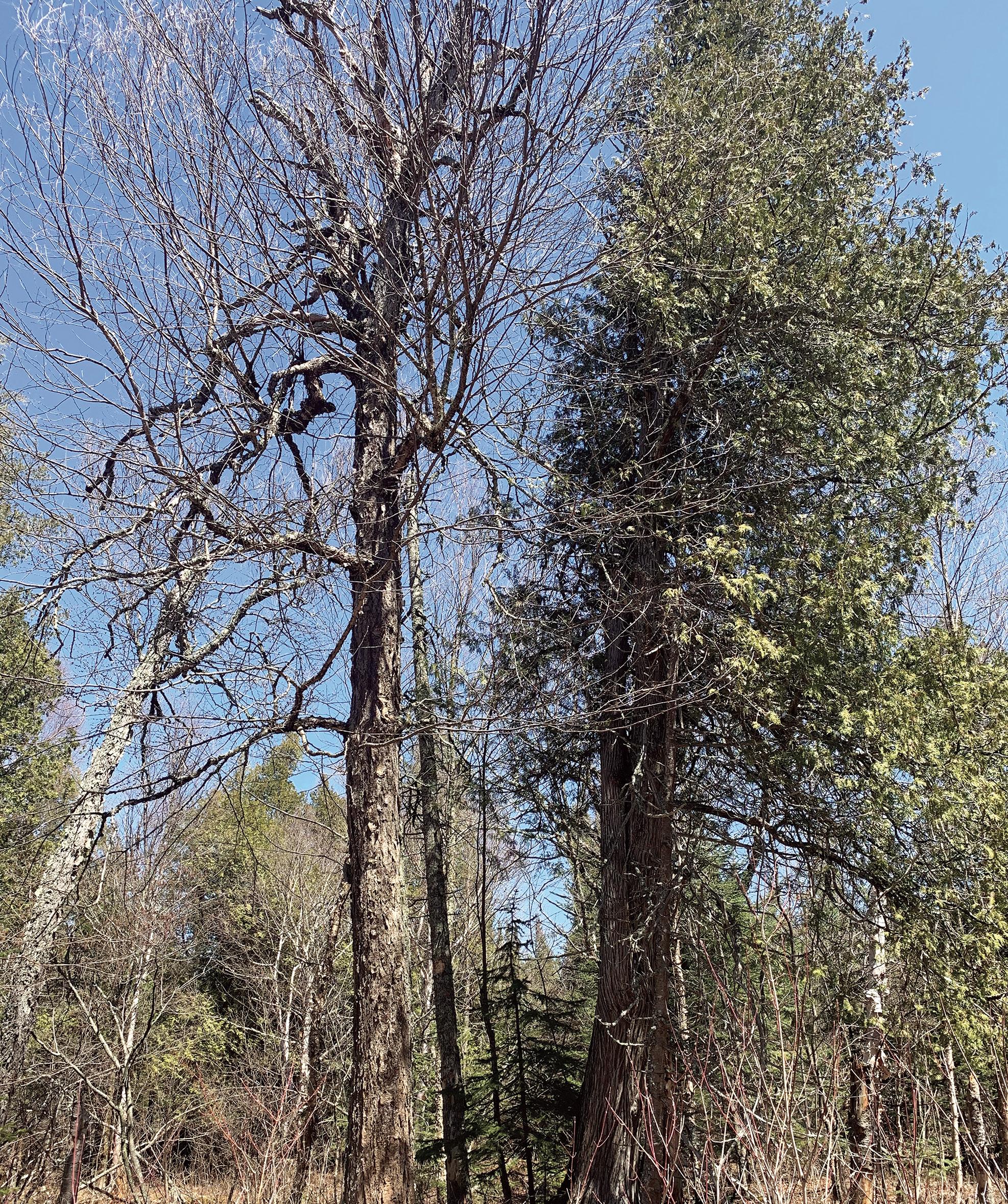
Yellow birch (Betula alleghaniensis), cedar (Thuja occidentalis), and black ash (Fraxinus nigra) are some of the common species in the diverse mesic mixed coastal forest along the North Shore of Lake Superior. | SUBMITTED

During these visits, many landowners expressed concerns about aging forests, spruce budworm outbreaks, deer pressure, and low species diversity. NSFC’s work has focused on mitigating these threats by promoting tree planting strategies that enhance resilience and providing cost sharing services. Advisors have recommended species like white cedar, white pine, yellow birch, sugar maple, and red and bur oak—trees that can thrive in the region’s challenging conditions while supporting a richer forest ecosystem.
This upcoming season will be the second and final year of this LCCMR funded program, but for those who are unable to get a free woods walk, NSFC partners have been creating educational materials to share their expert guidance on which tree species to plant, how to control invasive species, and what available cost share programs exist and what contractors could be hired to do the work.
Restoring a forest isn’t easy. Landowners have cited barriers such as the cost of fencing to protect from deer browse, seedling avail-
ability of specific species, and the physical demand involved with managing their land. To address these hurdles, NSFC connects participants with cost-sharing programs, tree seedling giveaways, and expert guidance to make restoration more accessible.
The NSFC Fencing Program, generously funded through the Weekes Family Foundation, provides financial assistance to landowners to purchase welded wire fencing to prevent deer browse. In 2024 alone, 2,221 seedlings were planted and protected through the program. Since the program began, 89,330 seedlings have been planted by participating landowners. This doesn’t include the numerous landowners who purchase fencing materials on their own or are reusing fencing as their original seedlings grow beyond the reach of deer.
To meet the need for tree seedling demand, many NSFC partners supply landowners with free seedling giveaways or lowcost tree and shrub sales, including the Soil and Water Conservation District’s annual tree and shrub sale and Let’s Plant Trees, Hedstrom Lumber, Castle Danger Brewery, Johnny Appleseed Effort, and NSFC’s annual seedling giveaways. Many of the white pine supplied on the shore are provided free from the MN Power Rajala Woods Foundation to partners. Public partners, such as the U.S. Forest Service, the Nature Conser-
vancy, and the MN Department of Natural Resources to name a few, are responsible for planting thousands of seedlings along public lands within the North Shore each year to improve and restore the forest, often prioritizing riparian shorelines and areas of groundwater recharge. Other public partners such as the Soil and Water Conservation Districts, Minnesota Land Trust, MN DNR, and Natural Resources Conservation Services provide cost sharing programs and land trust opportunities to further protect and improve private lands.
Every tree planted today is a step closer to restoring the North Shore’s legacy forests and improving forest diversity and resilience. Whether you have an acre or a hundred, your efforts matter. By joining the NSFC network, you can be among the first to know about all the reforestation opportunities and workshops available on the North Shore. Together, we can ensure that future generations will enjoy the iconic forests we all love that define this remarkable landscape.
Want to get involved? Visit northshoreforest.org to learn more and plan how you will make a positive impact to our North Shore forests.— North Shore Forest Collaborative


LUMstudio, my curated lighting exhibit and showroom in Duluth, is a significant portion of my architectural studio, CF design. Products and Process rarely occupy the same space. As a matter of lighting’s intimate relationship with form-making, texture, and color, we are bringing its best examples together in tandem with our studio work…and exploring the new opportunities that LED lighting brings to the small project and residential realm. Without a doubt, Architecture lives in light.
Knowledge that Light in space, or the absence of it, can offer us mystery and enchantment, scale and dimension, texture and form, has resided intuitively inside us all since there was, well, light. Captivated first by the ethereal qualities of color and transparency in daylight and in the service of the Heavens, light was universally lyrical and splendid. Later, the prismatics of carved glass in candlelight added wonder to fabrication. With the invention of the electric filament, light became a commodity, delivered in flare and spark to the lucky and notable—more for the wealthier—affluent brilliance, one in the same. Today, in aisle 7 of your nearest Big Box, we find the chandelier section. This is what has happened to our legacy of light and honestly—especially for those interested in texture and form…what could be worse?
Thus, CF design created LUMstudio to promote a modern Recovery of Illumination.
As of 2024, it has taken 100 years to realize the changes that began with Poul Henningsen’s design for the PH5 light fixture in Copenhagen, a simple fixture conceived by the North and Baltic Seas. In coastal
morning fog glowing in advance of sun—a hidden source echoes and bends its light, compelled by the uniform material of water vapor over the curvature of the earth. Individual clouds, in their density, behave as facetted panels…reflecting light back to the water, which will share this luminosity with objects and shorelines. Clarity of view—edges of objects, textures, and color all sharpen in the environment of reflected light…and change according to its intensity.
The PH5 conceals its light source, reflecting light between curved, smooth surfaces and a small colored plate. From the fixture to us come objects and scenes in shadowless lucidity. The nature of ALL reflected light is to be shadowless. Add color to reflective surfaces, as long wave lengths of light will blush clouds at the end of day, and the transmission becomes a remodeled messenger, an evening light dressed by its own reflection. Light as Experience, explored with the PH5, has informed some of the finest international fixture designs available today.
From Barcelona, on the Balearic Sea—and Helsinki, on the Gulf of Finland and Murano, on the Adriatic Sea, there are new lighting designs celebrating performances of light in nature living in LUMstudio, for you.
We are thankful to Poul Henningsen and the many talented global lighting designers who have taken his passion forward in a new—yet very old—world of LED lighting. Light can be shaped and selected to express the emotions and sensations of the world around us. Visit our studios. Find your light and experience ours.


310 East Superior Street, Suite 125, Duluth, MN 55802
218.722.1069 or 218.343.0983
www.cfdesignltd.com
www.lumstudio.us




THUNDER BAY—Northwest Ontario is a freshwater paradise. Rivers, streams, and lakes of all shapes and sizes cover the landscape. But what happens when all that water comes crashing downriver toward the region’s biggest city—Thunder Bay? The Lakehead Region Conservation Authority (LRCA) is designed to responsibly manage the water, land, and natural habitats of the Lakehead Watershed, all the rivers of which are tributaries of Lake Superior. Here’s how LRCA is providing a healthy, safe and sustainable Lakehead Watershed for future generations.
LRCA is one of 36 conservation authorities in Ontario, and is the farthest north and west of the bunch. In fact, 95 percent of Ontario’s population lives in a watershed managed by a conservation authority. The idea for such organizations was born in Ontario itself. Conservation Authorities began to be established by municipalities and the province in the 1940s in response to severe flooding and erosion problems in Ontario. Today they conduct watershed management, erosion control, flood forecasting and warning, recreation, water level monitoring, plan review, natural hazard permitting, environmental education, and stewardship.
Ryan Mackett, the LRCA’s communication manager since 2011, hadn’t been on the job even a year when the Thunder Bay flood disaster of May 28, 2012, occurred. “We had had several days of sustained precipitation, nothing major, but enough. The ground was saturated. The water table was high. All of the wetlands were already saturated. A sponge, right? So, we’re already at capacity, and then there was a massive extreme rainfall event on top of that.”
Mackett recalls the “drop everything” atmosphere that morning: “When we have a major flood event, we’re responsible for issuing flood messages. That’s the main role of the Conservation Authority. We get flood messages out to our member municipalities, so they can start initiating their emergency response programs. Everything else stops.”
Fortunately, LRCA and the City of Thunder Bay had taken action long ago to deal with such a flood disaster. The Neebing-McIntyre Floodway was completed in 1984 by LRCA with a final cost of $15 million. The floodway was constructed to address flooding in the lower Neebing River and Intercity area of Thunder Bay. During flood events, a diversion structure limits flows down the lower Neebing River, and instead diverts excess flows into a 1.5 km diversion channel. This channel directs ex-
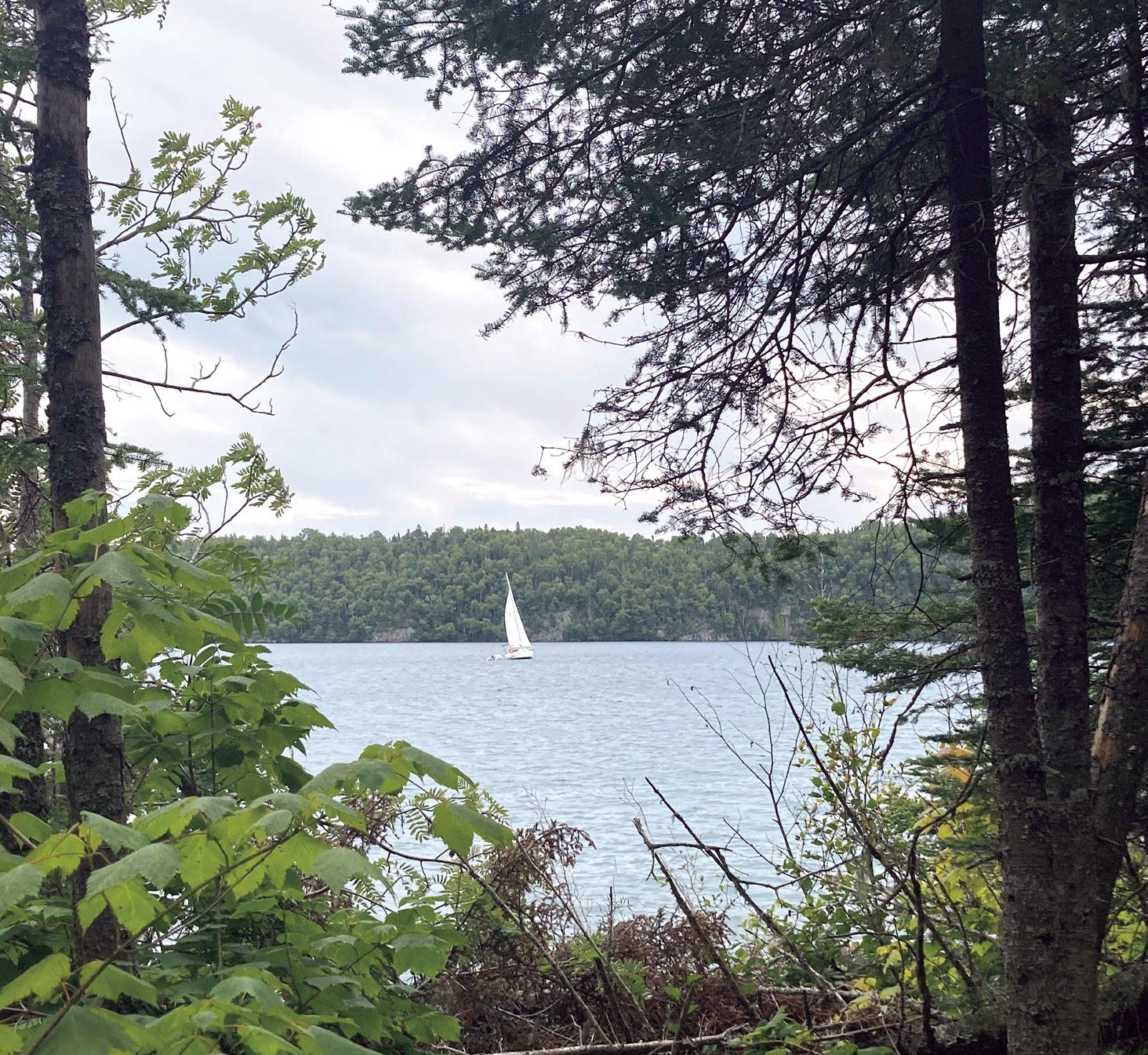
cess flows to the widened, deepened Neebing-McIntyre Floodway to Lake Superior.
The Intercity area had previously experienced major flood damage in 1968, 1971, and 1977. Not anymore. While there was still major damage in Thunder Bay in the 2012 storm, it was due to stormwater drains overflowing, not riverine flooding.
But life isn’t all disasters. What does LRCA do during nature’s calmer periods? “I always say that the Conservation Authority has two sides to a coin,” explains Mackett. “There’s the lawyerly, regulatory side of things, which is your flood forecasting, your development regs, and your plan input. Then the flip side of that coin is the recreational and educational piece of our water management.”
The small but hardworking team of 15 full-time staff, as well as additional summer staff at LRCA, ensure that landowners are properly permitting construction projects in flood zones, and that real estate agents and homebuyers are aware of potential hazards

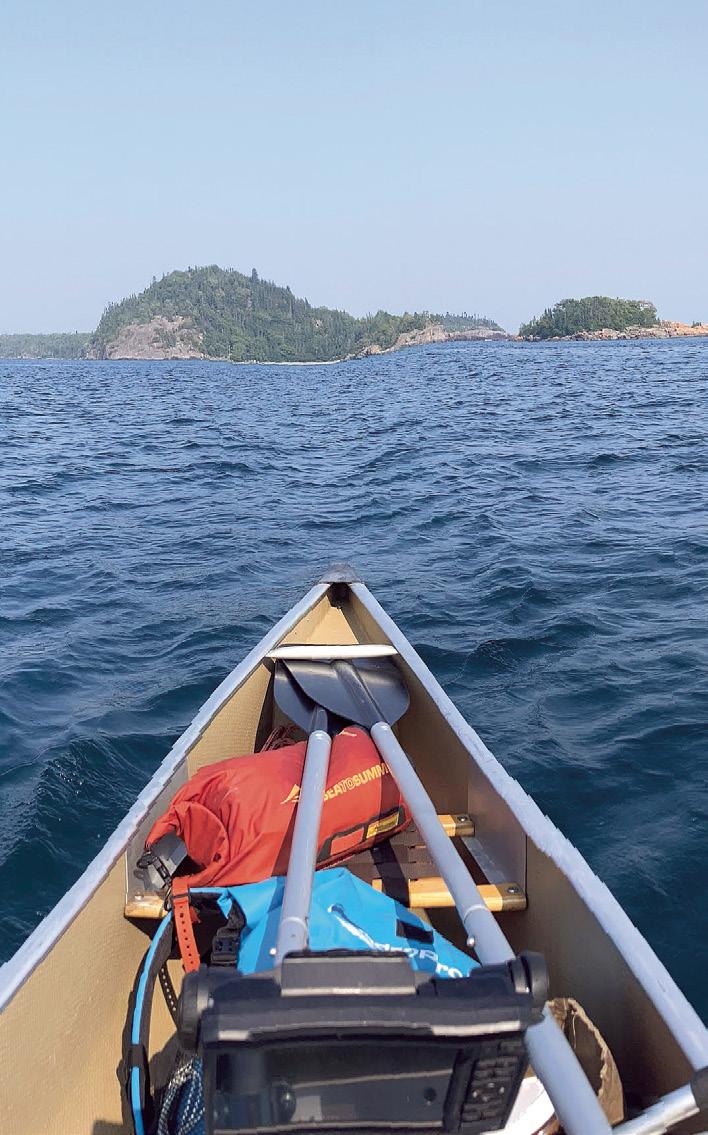
through the LRCA’s mapping tool. Landowners can use this mapping tool to gain an understanding of their property, and identify potential hazards or regulated areas. If people’s property is within a regulated area, they will require a permit from LRCA for any proposed development.
Mackett recounts the 2024 results of LRCA’s Regulations Department: “We provided 145 commenting sessions as part of development planning input, so 145 requests came through to us for new municipal planning. We issued 967 property maps to people looking for information about their properties. We had 361 inquiries about personal properties, so 361 people were looking to see whether they needed a permit to do new buildings or not. Out of those, we issued 92 permits, so only 92 property owners actually needed a permit.”
LRCA conducts permitting for things like construction, addition, placement or removal of fill and site grading, alteration to shore-
lines and watercourses, and infrastructure and water crossings.
Another one of LRCA’s major conservation contributions is as a landowner itself. LRCA owns and pays property taxes on many properties throughout the City of Thunder Bay and other member municipalities. Why?
“Certain properties are known to be flood prone, or potentially hazard lands, or provincially significant wetlands. If those are taken off the market completely, then we don’t have to worry about any development issues or potential flooding conflicts,” Mackett explains.
Mackett also likes to point out that LRCA is not in charge of rivers. “Because we’re an environmental organization, and because we have properties around town, we’ll regularly get calls about random things. People will call us and say ‘Well, aren’t you guys in charge of the rivers?’ We have to just politely say, ‘I’m sorry, we don’t manage beavers.’”

So, what about LRCA’s flip side, recreation and education? LRCA proudly offers the community 10 Conservation Areas for semi-passive recreational use, access to Lake Superior, and other activities such as birding, photography, hiking, and more. These Conservation Areas are open to the public, and charge a small fee for parking. They’re day-use only.
Mackett notes the “showstopper qualities” of these public areas. “They’re all unique and they all have their own hidden features and attractions. Everybody knows the big ones, like Cascades, and Mission Island Marsh. Those are the two biggest, most visited areas. But then we have some hidden gems, too.”
Like Little Trout Bay, close to the U.S. border, where there’s a public boat launch on Lake Superior, and great fishing for trout and salmon. LRCA hosted the inaugural Little Trout Bay Fishing Derby together with the Municipality of Neebing in August 2024, and anglers can look forward to the event’s second iteration in late August of this year.
Another gem is Hurkett Cove Conservation Area, also on Lake Superior, in Dorion Township. “Hurkett Cove is a naturalist’s paradise, especially this time of year, because we’re getting into spring bird migration season. Sleeping Giant Peninsula acts as a natural funnel for migratory birds coming across Lake Superior, and so for a lot of birds,



their first landing point is going to be around Hurkett Cove,” Mackett explains.
Lakehead Region Conservation Authority’s area of jurisdiction encompasses 2,719 square kilometers of the Lakehead Watershed. All rivers and tributaries within the Lakehead Watershed flow into Lake Superior. Therefore, the LRCA plays a key role in administering watershed management programs to help ensure the health of the region and its water. Go check out LRCA’s Conservation Areas and see how healthy water contributes to high quality of life.
Chris Pascone

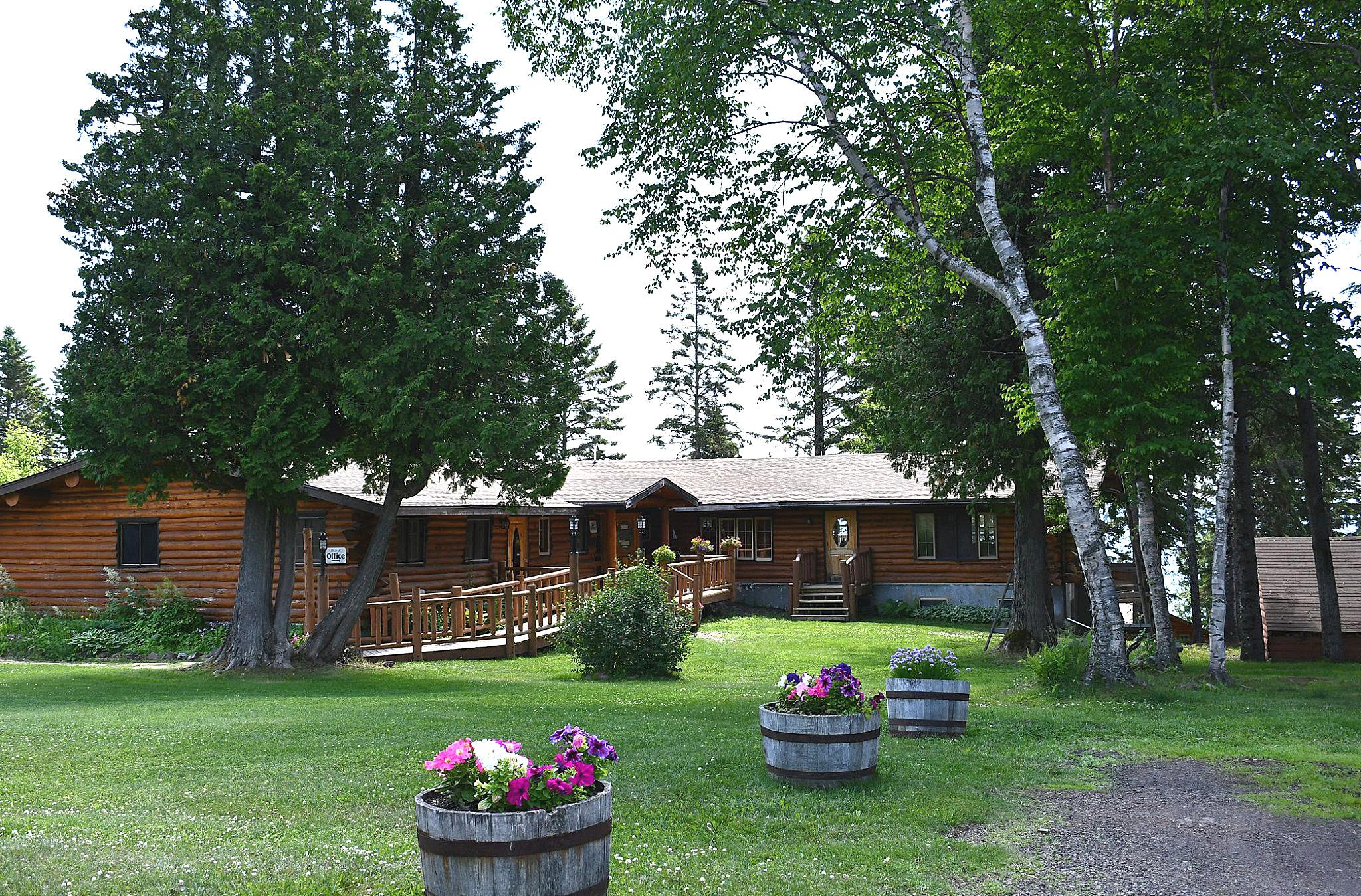



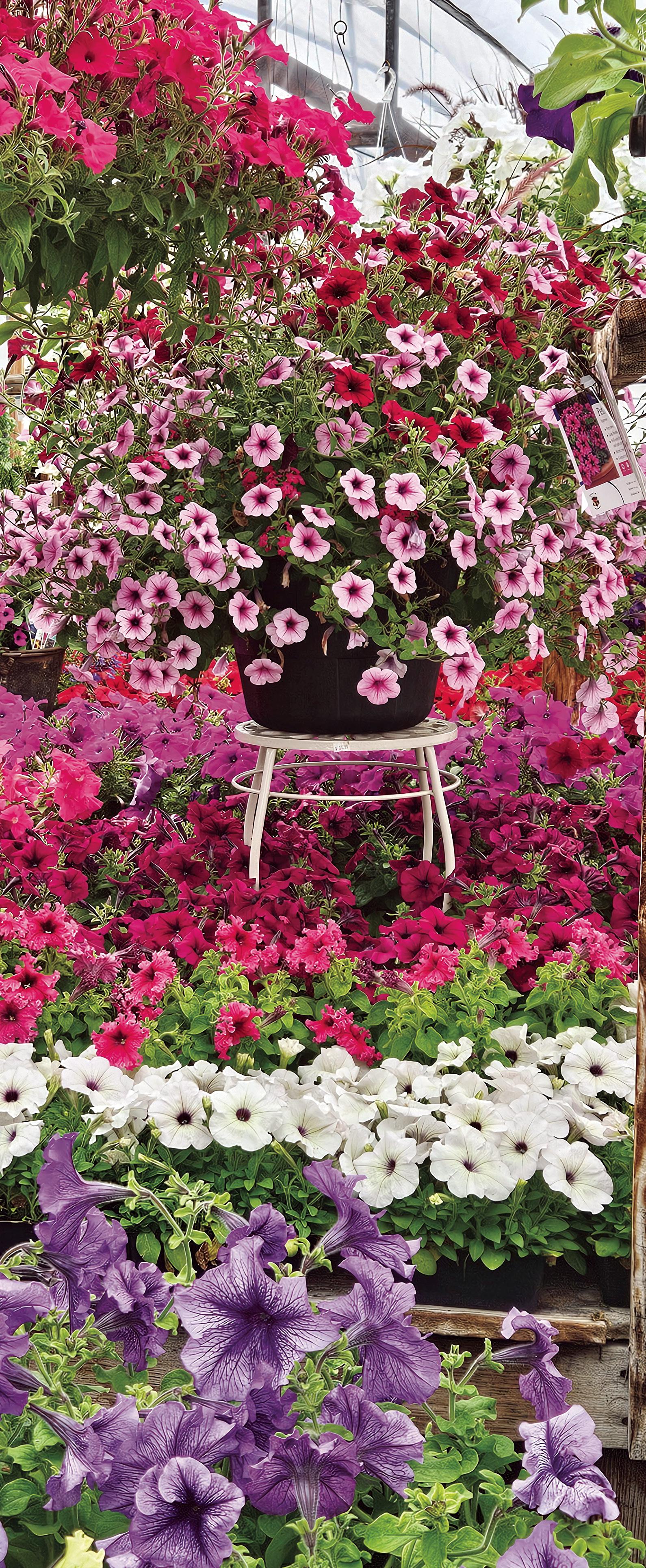

By Dana Johnson
The last patches of snow are melting into the soil as the northland warms with the sun, finally waking up to the quiet hum of spring. With our short growing season in mind, gardeners and greenhouses have been busy preparing for the rush.
Springtime gardening is about more than putting plants in dirt—it’s a celebration, and a challenge. Nurturing plant life is a rewarding experience with real physical and mental benefits that anyone can access.
This guide will serve as an introduction to planting in our unique area, including basic advice on sourcing and choosing plants, soil preparation, and planting techniques. Whether you’d like to grow some tomatoes in pots on your patio, landscape your yard with native wildflowers, or simply hang some beautiful floral baskets, you’ll find insights to help your northern garden thrive.
There are many practical and enriching reasons to work with plants. The physical
act of gardening keeps you moving, stretching, and lifting helpful for improving strength and flexibility. Connecting with nature and spending time outside reduces stress and improves mood, and growing fruits and vegetables gives you the freshest farm to table experience possible.
Gardening supports pollinators, reduces soil erosion, and can help manage storm water. It’s also a great way to connect with the community, family, and friends by sharing seeds, produce, and planting space. You can transform your property for years to come with the strategic planting of trees and shrubs.
Choosing the right plants for your project is a big decision. There are several factors to consider, such as hardiness zones and ecoregions for outdoor growing, how much space you have, how much light the area gets, as well as personal preferences. Many people have a connection to certain plants or flow-
ers based on family history or individual experiences, and that’s a great place to start.
“I love to grow pansies,” says Sandy Maxwell, “maybe because the Scandinavian immigrants, including my grandmother (Lise Mattson) grew them. They did so well in the cool climate along the North Shore.”
Maxwell and her partner Robert Cunningham are co-owners/growers of Maxwell’s Woodland Nursery located near Finland. “I like to joke that the first ‘task’ I ever gave Robert was to build a little greenhouse for me. Then came another and another,” Maxwell recalls. “I barely dare to say it out loud, but that was 40 years ago. The business just grew and evolved over the years.”
Maxwell’s Woodland Nursery sells a wide variety of annuals, perennials, trees, and shrubs. “One of our best sellers are fuchsia, and combination hanging baskets,” Maxwell says. “We have a nice array of perennials, and I like to think of them as our specialty.”
Perennials are great for landscaping because they sleep through the winter and come back on their own each spring, where annuals complete their life cycle through a single season and must be replaced annually, though they tend to grow quickly and often bloom profusely. Many gardeners use a combination of both.
When it comes to fruits and veggies, there’s a clear favorite in the northland. “Tomato starts are a mainstay at the greenhouse,” Maxwell says. With so many varieties to choose from, they are perfect for both beginners and advanced gardeners. “Who doesn’t love a fresh tomato off the vine.”
Jennifer Couillard, owner of Spring at Last Greenhouse in Duluth, agrees. For new gardeners, she recommends “tomatoes, rhubarb and salad greens for edibles, geraniums, coleus, and marigolds for annuals, and bee balm, coreopsis, hostas, and coneflowers for perennials.”
Spring at Last used to be Cummings Greenhouse, owned and operated by Barb Cummings with history going back to 1970. She offered the business for sale in 2015, and it caught Couillard’s attention. “When I saw that it was still for sale in 2016, I decided to ask about it,” she recalls. “I asked if she would ever consider mentoring me and she, without hesitating, said yes.” Couillard and her husband bought it that year and quickly learned all they could as Cummings guided them through their first season.
Couillard sells many plants, including some grown from seed in house. Annuals, perennials, herbs, vegetables, house plants, and succulents can be found at Spring at Last, plus over 600 hanging baskets.
“We have metal art, a wide variety of pots and planters, fertilizer, soil and soil additives, fairy garden supplies, garden art, stepping stones, commercial pots and services, terrarium supplies, cemetery baskets, specialty planters and baskets, and advice for new gardeners,” she mentions. “Our baskets, geraniums, large tomato cans, zinnias, and impatiens are our best sellers.”
When choosing your plants at a nursery or greenhouse, look for healthy, uniform foliage that’s not yellowing or wilted. If you can see roots, they should be white and

firm—not brown or mushy. Try to purchase and plant perennials before they bloom, as they’ll establish better if they aren’t expending energy on flowers. Check the plant tags and talk to the seller to make sure they will work for your project.
Healthy plants require healthy soil. By using a soil testing kit, you can determine what kind of nutrients are needed to tweak the pH and ensure the correct balance for your chosen plants. Adding lime will raise the pH, while adding elemental sulfur lowers it.
The northland’s soil is naturally slightly acidic, which is ideal for many plants. Organic compost, aged manure, and/or peat moss are used to improve soil texture and fertility.
There are several ways to determine when to plant, though it’s often based on the frost schedule. Seeds can be sown and starters transplanted after the last frost, which occurs mid-May for most of Minnesota, though some Northern Wilds gardeners choose to keep their tomatoes and other cold-sensitive plants indoors until June.
Raised beds and containers are great options for beginner gardeners or those with limited space.
In-ground beds are best for larger areas and food production, though our rocky soil is challenging to work with. Hugelkultur is a raised bed technique involving layering logs and other organic materials with soil that slowly breaks down and feeds the plants over time.
Once you’ve figured out your garden’s location and prepped your soil, it’s time to plant! Follow the instructions on your seed package for straight sowing. For most seedlings and starters, simply dig a hole about twice as wide and just as deep as the plant’s root ball. Carefully remove the plant from its container and set it in the hole, adjusting the soil so the top of the root ball is slightly higher than the surrounding soil, fill in

the rest, and gently pat it in place. Water the plant to help it establish, and you can add mulch for moisture retention.
Understanding our unique northern environment is important for planting, particularly for perennials. USDA Plant Hardiness Zones have long been used to determine what non-native plants will thrive in a location. They are based on a 30-year average annual minimum winter temperature, which changes based on elevation and proximity to the big lake. Our Northern Wilds varies from Zone 3a, the coldest inland areas, to Zone 4b along the warmer Lake Superior shoreline.
Climate change has been pushing hardiness zones northward as temperatures warm, and we may see our northern landscape respond as threats like plant diseases, pests, droughts, and other disturbances become more common.
Gardeners are unlikely to see immediate effects, however. Every yard has its own microclimate, affected by things like nearby buildings, hedges, trees, concrete and roadways, high and low points, and other factors. Often the winter preparation you do or don’t do determines whether or not your perennials survive the cold season.
The plants you see for sale in local greenhouses are meant to thrive in your zone if you can meet their needs with your space, though certain future-proof plants can be a good option for those with climate change concerns.
“Maxwell’s Woodland Nursery is a member of ‘Farm and Forest Co-operative,’” Maxwell explains. “We are a group of small regional farmer/growers who grow ‘climate smart’ tree seedlings that will do well as the climate changes.” Yellow birch, red and bur oak, and black cherry are a few trees they offer.
While hardiness zones focus on temperature trends, ecoregions consider soil type, moisture, elevation, native vegetation, and wildlife. Most of the Northern Wilds area is considered part of the ‘Northern Lakes and Forests’ ecoregion, which is further divided based on topography and other factors.
Ecoregions can be especially helpful when choosing sustainable, locally native plants to add to your property. Plants adapt over thousands of years to grow where they do, and even plants with wide native ranges often have subtle adaptations to help them thrive in specific places within that range.
Native planting is all about supporting the local wild ecosystem. Native trees, shrubs, and wildflowers require less water and fertilizer, provide food and habitat for birds and insects, and they’re often more resilient to pests and diseases.
“Before planting a native garden, visit other native gardens to see what you like,” Couillard recommends. “You will want the garden to benefit native birds and pollinators, and bring you joy.”
Working with plants can be challenging, especially in our cold climate, but the rewards are worth the effort. This summer and fall, your green space could be filled with beautiful, sweet smelling hanging baskets, a thriving raised bed garden, and the freshest, tastiest produce you can find. Start with a trip to your local nursery or greenhouse, and happy planting!
Maxwell’s Woodland Nursery is open every day through June, with days/hours reduced later in the season. Visit them at 6185 Lax Lake Road in Finland and check their Google listing for current open hours.
Spring at Last Greenhouse is also open seven days a week at 4112 West Arrowhead Road in Duluth. For hours and more information, visit: duluthgreenhouse.com.

By Erin Altemus

A beaver’s teeth never stop growing over the course of its lifetime, which is one reason it is constantly gnawing and chewing on wood, so its teeth don’t grow too long. | ERIN ALTEMUS
On a quiet evening, the slap of a beaver’s tail hitting the water is familiar to many of us, though often the sound does what it should: takes us by surprise. The beaver, North America’s largest rodent, is reclusive, shy, and defensive of its territory. A slap of its tail is a warning to all passersby—especially possible predators—that the beaver’s turf should not be crossed.
Perhaps the beavers of today know more than we think about the tumultuous past when humans trapped their ancestors to near extinction to sell the valuable beaver furs to markets abroad. Today, beavers have made a remarkable come-back, but to many, the castor canadensis, remains a nuisance animal. Luckily for the beaver, research is mounting that proves what a vital role beavers can have in helping to maintain a rich and diverse ecosystem.
Two books published in recent years (Eager: The Surprising, Secret Life of Beavers and Why They Matter by Ben Goldfarb (2019) and Beaverland: How One Weird Rodent Made America (2024) by Leila Philip) now highlight beavers as a keystone species, meaning, it has a disproportionately large impact on its environment relative to its population numbers and it plays a vital role in the function of the ecosystem in which it lives. Another way to define ‘keystone species’ is that other species depend on it—i.e., the loss of the beaver in its ecosystem could have devastating effects on other species.
Beavers get a bad rap for causing flooding problems where humans don’t want water, but here are some of the reasons the beaver and its ecological services should be given more credit.
Flood events are not common in the northland, but unfortunately, they are becoming more common. In late June 2024, the North Shore, especially Finland to Ely, received 6 to 9 inches of rain in a short period, causing severe damage to many roadways and bridges in the area. Accord-

ing to a MN DNR climate summary, major rainfall events in Minnesota have been over 2.5 times more common during the first few decades of the 21st century than they were during the last few decades of the 20th century. A 2024 study published by the University of Exeter in the UK found that beaver dams and the wetlands they create can reduce storm flows by an average of 30 percent during heavy rainfall.
As water accumulates in a beaver-made wetlands, it backs up behind the dam, pushing into the backwaters behind the dam and the channels and canals that the beaver has created. The dam itself is porous, letting water through without bursting open. In a large rain event, water goes over the top, but it is less likely to burst open than a man-made dam that will only hold to a certain breaking point and then burst. Similarly, in a river/creek system with no beaver activity/wetland, the water in a flood only grows higher and faster, potentially causing erosion that increases with the scale of the flood.
Just as the beaver dam helps hold back water in a flood, the dam is also holding back water on an average day. This creates a pond that is the home a beaver needs to be safe. The beaver spends most of its day either in the water or in its lodge, a separate structure from the dam. In the water, the beaver is generally much safer than on land, where its dragging tail and waddling feet don’t allow it to move very quickly if found by a predator such as a wolf or coyote. But in the water, the beaver can stay underwater for up to 20 minutes at a time. The beaver’s pond needs to be deep enough not to freeze completely in the winter, as they will store a food cache under the ice and next to their lodge and access this throughout the winter for food.
The pond that serves the beaver permeates the land on either side, creating a riparian area that is lush and green, broken up by the small canals that beavers dig to access the land. The channels also serve as

In the Boundary Waters Canoe Area Wilderness, beaver dams are common on many small riverways and streams, posing an obstacle for canoeists. However, beavers are generally able to do as they please here and the multitude of beavers and their influence on the landscape is one reason why the BWCAW remains one of the most intact ecosystems in the world.
| ERIN ALTEMUS

escape routes should a predator chase the beaver while taking down a tree.
Dr. Emily Fairfax, a professor, scientist, and researcher at the University of Minnesota, calls these channels that the beavers dig a “drip irrigation system” running throughout the riparian zone, allowing the water to soak into the landscape slowly. In times of drought, she has found in her studies that wetland areas with high beaver activity stay much more vibrant than wetland areas without beaver activity, which still succumb to the effects of drought, i.e., the plants wilt and turn brown. The beaver dams and ponds raise the water table alongside a stream thereby storing up water that would otherwise flow through the watershed. In turn, riparian plants can more easily access water and tolerate the effects of a drought.
A 2018 study from the University of Stirling in Scotland surveyed aquatic plants and water beetles in Sweden comparing non-beaver-made wetlands to beaver-created wetlands and found 33 percent more plant species and 26 percent more beetle species in the beaver-created wetlands. This seems consistent with a wealth of studies that show beaver habitat as having 30 percent more diversity than similar non-beaver habitat.
Beaver dams are permeable whereas human dams are not, which allows fish species to move up and down a waterway. Likewise, the water behind the beaver
dam isn’t stagnant (as it’s moving slowly through the dam), so the temperature stays cooler (than a comparable pond behind a human-made dam). Similarly, beaver dams, made up of a mosaic of sticks, logs, and other natural objects such as rocks and leaves, create a better habitat for native fish species by making places for the fish to hide.
Dr. Steve Windels, a wildlife biologist for Voyageurs National Park (VNP), presented at the 2023 Beaver Summit about the biodiversity that beaver habitat promotes. He stated that the VNP has the highest density of beavers in the United States and that beavers utilize 13 percent of the landscape in the park. His studies have found higher utilization of beaver habitat (wetlands and ponds) by moose, osprey, trumpeter swans, otter, pine marten and muskrats (muskrats actually will share a beaver’s lodge), amphibians, turtles, as well as 77 species of birds. Windels stated that 124 terrestrial vertebrate species use VNP beaver habitats (excluding fish).
Drive any area backroad or perhaps the Gunflint Trail and the signs of beaver activity are widespread. Beaver ponds and wetlands created by beavers are not hard to find. Imagine the landscape in the early 1900s when beavers were almost absent. What did these wetlands look like without the presence of beavers? Were the wetlands as prominent as they are now? Imagine that in the Pleistocene age, beavers were as big as buffalo. Perhaps the next time you hear a beaver slap its tail, it may be with new admiration.
Shop from 120 artists and vendors at the annual Spring Craft Revival in Thunder Bay, held Sunday, May 4, in the Waterfront District. This fun event takes place from 10 a.m. to 4 p.m. and will also feature live music and entertainment. See our events section for more info.

These
|

|


a-kind
|


By Rae Poynter
After a long winter, the sudden explosion of plant life makes May on the North Shore feel like stepping into a new world. Plants are integral to our well-being and happiness. They’re a source of food and medicine, for one. But they also offer wells of peace, creative inspiration, and beauty. One local artist who knows the power of plants is Tara Austin, a rosemaler and painter whose work blends the traditions with inspiration from her home of Lake Superior’s North Shore.
Although Austin was always a creative at heart, her journey into rosemaling didn’t begin until she was pursuing her MFA in painting and drawing. During one of her first critiques in grad school, her professor said that her painting style was reminiscent of rosemaling. Intrigued, she signed up for a rosemaling class at North House Folk School in her hometown of Grand Marais. She fell in love with rosemaling—its nuances, process, and roots in nature—and has been practicing the folk art ever since.
For those who aren’t familiar with the term, rosemaling is a style of painting that arose in Norway in the 1700s. During this time, guild-trained artists traveled throughout Norway, adorning the interiors of churches and homes with their work. As the years went on, distinct rosemaling styles began to arise in Norway’s different regions, like dialects of a language. But whether it’s the tulips of Valdres style or the fantastical flowers of Telemark style, all styles of rosemaling share a common inspiration— plants. For Austin, who grew up surrounded by the natural beauty of the North Shore, it was this pairing of painting and plants that led her to falling in love with the art form.
“I feel at home in the woods, and I think my attraction to rosemaling stems back to growing up in the woods up the Gunflint Trail,” Austin said. “I’ve always loved plants—plants and floral elements have always been a part of my work, so rosemaling was a natural path from there.”
Although rosemaling is rooted in traditions, each artist approaches the craft with their own sense of style. Austin’s work is grounded in the Gudbrandsdal style of rosemaling, which is characterized by the acanthus leaf. All styles of rosemaling have swirling patterns called “scrolls” as their basic building blocks.
“The patterns in nature are something people instinctively find peace in,” Austin said. “There’s a mesmerizing complexity in them, and rosemaling has similar patterns— you start with a core, like the root of a plant, and the scrolls are growing out from there.”
One of the things that makes rosemaling distinctive is that, unlike some other forms of art, it wasn’t primarily done on paper or canvas; instead, it began as a way to deco-

Rosemaler and painter Tara Austin. | SUBMITTED
rate the home. Walls, doors, trunks, and other household objects were the surfaces of choice, and such is the case for Austin’s work today. Much of her work has involved custom projects for clients—everything from rosemaled cupboards to front doors to a paneled screen for Prospect Refuge Studio. Austin sees this as a way to invite the calming beauty of the natural world into our personal spaces and lives.
“Here in Minnesota, like in Scandinavia, we spend so much time inside during the winter. The spaces we live in are our sanctuaries, and our cold climate forces us to pay attention to our interiors,” she said.
“The rosemaling I’ve done on interiors is permanent, and I like that—I think people shouldn’t be afraid to embrace their own style, and should feel empowered to do what they want in their own space.”
In addition to her custom interior work, Austin also paints rosemaled Dala horses, and teaches rosemaling classes at places like the North House Folk School, including a class on rosemaling 10 different plants of the boreal forest. No matter the project, Austin said that her passions for painting and plants continue to inspire each other: her art leads her to closer observation of and appreciation for the flowers around her, and her time in the woods finds its way into her art. It’s this melding of the natural and artistic worlds that drives her creative spark.
“When I make my work, I don’t go into it with an agenda or a story to tell. My hope is that people who view my work find a peaceful moment, like they do when outside in nature or looking at a flower,” Austin said. “Those moments are important.”
Tara Austin’s work can be found on her website at: taraaustinstudio.com.

Although rosemaling is rooted in traditions, each artist approaches the craft with their own sense of style. | SUBMITTED



Much of Austin’s work involves custom projects for clients—everything from rosemaled cupboards and doors to trunks. In addition to her custom interior work, Austin also paints rosemaled Dala horses and teaches rosemaling classes at the North House Folk School.
| SUBMITTED






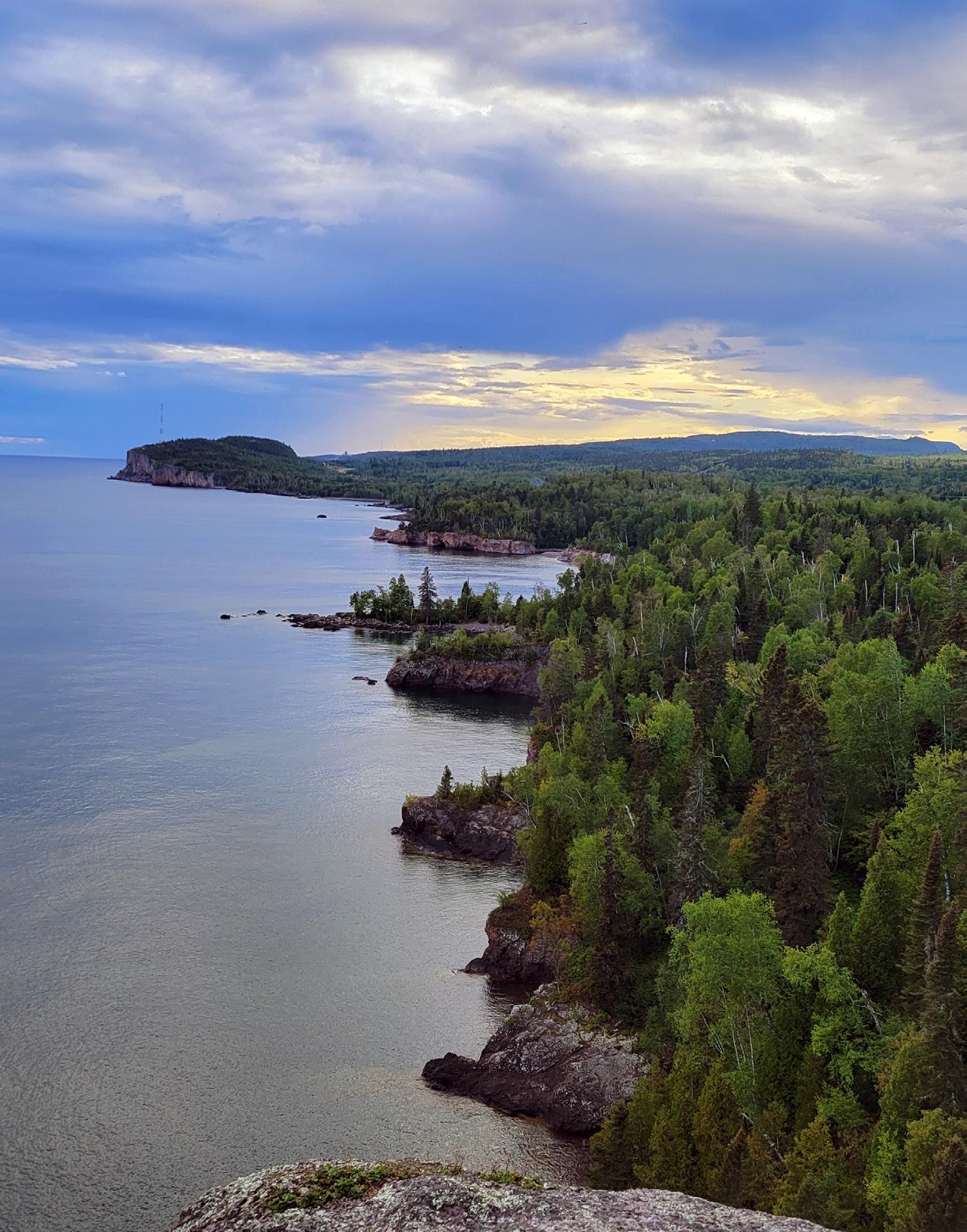




April 27-May 4 The Homegrown Music Festival is an annual community celebration of the original and diverse music of Duluth and its surrounding communities. What started in 1999 with 10 acts has matured to an eight-day community-wide local music, arts, and cultural extravaganza. The festival kicks off on Sunday, April 27 with live performances at various locations. Performances throughout the week include Breanne Marie & the Front Porch Sinners at Blacklist Brewing Company, Hobo Revival at Zeitgeist Teatro, Cerebellum at Duluth Cider, Stardust Collective at West Theatre, Ponyfolk at Canal Park Brewing Company, and more. A full schedule of events can be found online. facebook.com/duluthhomegrown
May 4, Sunday Visit Thunder Bay for the annual Spring Craft Revival—a day where creativity awakens across the Waterfront District and Prince Arthur’s Landing. Prepare to explore a plethora of handmade treasures from 120 talented artisans, featuring everything from oneof-a-kind jewelry and pottery to textiles, woodworking, and more. Held from 10 a.m.-4 p.m., there will also be live music and delicious food and drinks from local restaurants. Whether you’re hunting for something unique or just enjoying the atmosphere, there’s something for everyone. facebook.com/craftrevivaltbay

May 7, Wednesday Join the Ely Folk School in a celebration of spring with a bonfire at Semer’s Park Beach and Pavilion. Held from 5-7 p.m., there will be yard games, beer and wine, snacks, live music, and more. New this year is an invitation to participate in the event potluck style and bring a batch of homemade hand pies to share. Please be sure to label your hand pies with all ingredients. This annual event is free and will be held rain or shine, but donations are appreciated.

COUNTY YMCA
DANCE RECITAL: ROCK ON
May 8-10 Over 125 dancers of all ages will perform in the 9 th annual Cook County YMCA dance performance, titled Rock On. The recital features ballet, tap, jazz,
and hip-hop dances, choreographed by Christine
Clare Shirley, and Lesli Higgins. The recital will be held at 6 p.m. on Thursday and 7 p.m. on Friday and Saturday, at the Arrowhead Center for the Arts in Grand Marais. Tickets are $15 for adults and $8 for youth ages 3 to 17. Tickets can be purchased online in advance or at the door. facebook.com/cookcountycommunityymca

May 16, Friday The Grand Marais Ole Opry returns to the Arrowhead Center for the Arts in Grand Marais for a night of rich harmonies, heartfelt storytelling, and classic country sounds. Headlining this year’s event is the acclaimed duo The Cactus Blossoms, with support from rising artist Clare Doyle and local favorite Lynden


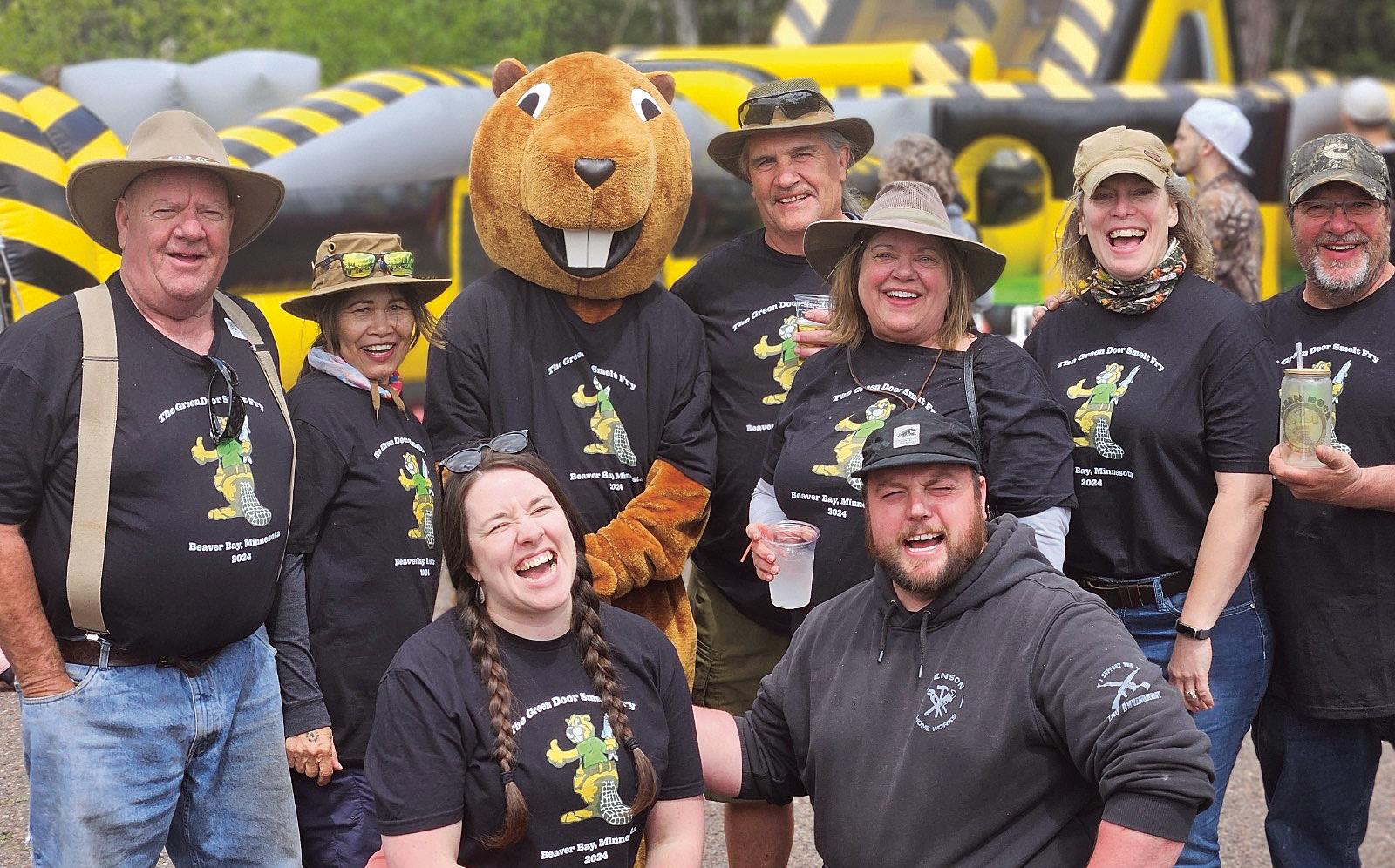
Blomberg opening the show. The box office opens at 6 p.m. and the fun starts at 7 p.m. This year, the North Shore Music Association is offering sliding-scale ticket pricing for the Opry. Supporting tickets are $30 (pay it forward to help cover costs); standard tickets are $20 (regular admission); supported tickets are $15 (a lower-cost option with no questions asked); student tickets are $10 (for ages 12 through college); and kids under 12 years old are free. northshoremusicassociation.com
May 17, Saturday The historic Green Door Smelt Fry returns to Beaver Bay, featuring all-you-can-eat fried smelt using the original Green Door recipe dating back to the first smelt fry hosted by the Beaver Bay Fire Department in 1958, along with a basket of tartar sauce, coleslaw, potato chips, and that classic carton of orange drink. Fried smelt will be served from 11 a.m. to 3 p.m.
from the Baptism River Barbecue Co. food truck. This family-friendly event will include live music all day on the outdoor stage. The Outdoor Sports Expo will feature vendor booths, local outdoor and adventure businesses, and a silent auction benefitting outdoor youth sports in Lake County. Pre-sale tickets for the all-you-can-eat smelt fry are $10, available now through May 10. Tickets will also be available at the event for $15. facebook.com/baptismriverbbq
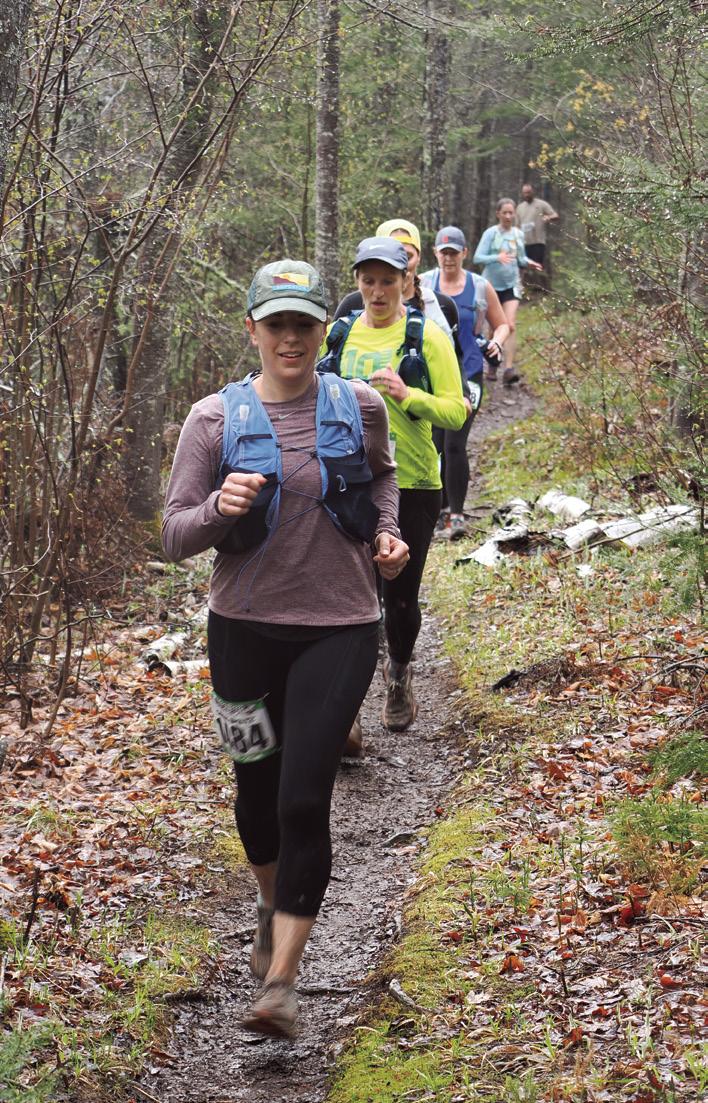
May 17, Saturday Located in Lutsen, the Superior Spring Trail Races traverse the Sawtooth Mountain Range via the Superior Hiking Trail. Runners will face extremely hilly, rugged terrain, crossing rivers and streams through the boreal forests. Courses include a 50km starting at 7 a.m., a 25km starting at 8 a.m., and a 12.5km at 9 a.m. The 25km and 50km start and finish at Caribou Highlands Lodge, and the 12.5km is point-to-point, finishing at Caribou Highlands Lodge. Aid stations are provided for the 25km and 50km races, and spectators are welcome. Race registration required. superiorspringtrailrace.com





May 19, Monday The Fire Fighters Ten Mile Road Race has been a Thunder Bay tradition since 1910, promoting an active, healthy lifestyle for runners of all skill levels. This in-person race will be held on Simpson Street. Individual runners will start at 9 a.m., followed by relay teams starting at 9:10 a.m. The route is an out-and-back with a loop through Marina Park; aid stations provided. Afterwards, an awards presentation with door prizes will be held at noon at the Columbus Center. Registration required to participate. 10mileroadrace.org
May 19-25 Head to the Twin Ports to celebrate Minnesota’s native son Bob Dylan. This year’s Duluth Dylan Fest will kick off on May 19 with a free acoustic jam session at Carmody Irish Pub in Duluth from 5:308:30 p.m. Other festival activities throughout the week include a singer-songwriter contest, a tour of Bob Dylan sites, lots of live music, various lectures, a dance party, and more. Admission is required for certain events. More information can be found online. duluthdylanfest.com

May 24, Saturday Hundreds of gravel grinders will take to (mostly) unpaved routes on fat-tire bikes, starting in downtown Grand Marais. Held by Heck of the North Produc-
tions, the Le Grand Du Nord offers three events for cyclists: a 110-mile, 50-mile, and 26-mile route. With 6,000 feet of climbing and a decidedly remote feel, the 110mile course is beautifully challenging. The 50-mile course has plenty of climbing and miles of forested roads. The 26-mile “marathon” route is a Le Grand-worthy introduction to gravel cycling with its mix of paved and gravel roads, climbing, and great views. The first wave starts at 8 a.m. and spectators are welcome. Riders 18 and younger ride for free with an adult. Registration required. heckofthenorth.com

May 25, Sunday The Magic Smelt Puppet Troupe will hold their annual parade and party on May 25 in Duluth. This free, family-friendly event begins at 3:30 p.m. with the presentation of the giant Smelt Queen on the lawn behind the Paulucci Building (at the Aerial Lift Bridge). The parade will then proceed down the Lakewalk, featuring live music by the Twin Cities brass band the Brass Messengers, a stilt walking royal guard, an energetic school of silver smelt puppet and mask dancers, and more. Participants and spectators are encouraged to wear silver. Following the parade will be a smelt fry and dance at Zeitgeist Arts Café. magicsmelt.com

This year’s Northern Landscapes Festival, held at the North House Folk School in Grand Marais, will offer a course on beekeeping basics. | SUBMITTED
May 30-June 1 Learn about the birds, wildflowers, and insects of the northern landscape at this annual North House Folk School festival in Grand Marais. This year’s course offerings include beekeeping basics, welcome to blacksmithing, foraging for spring wild edibles, discovering the
language of birds, and more. Other festival highlights include a film at 7 p.m. on May 30 titled Bad River, and a discussion with author Ferin Davis Anderson regarding her book Wildfire: The Culture, Science and Future of Fire, held May 31 at 7 p.m. The film and presentation are free and open to the public. northhouse.org





Thru May 4
Treaty 3: The Sacred Document Thunder Bay Museum, thunderbaymuseum.com
Thru May 18
The Hovland Arts Group Exhibit Johnson Heritage Post Art Gallery, Grand Marais, cookcountyhistory.org
Thru May 25
Where My Dreams Lay: Secondary School Art Show Thunder Bay Art Gallery, theag.ca
Thru May 26
Brooke Koop: Reflections of Nature: The Majesty of Lake Superior Great Lakes Aquarium, Duluth, glaquarium.org
Thru May 31
April Showers, May Flowers Exhibit Nordic Center, Duluth, nordiccenterduluth.org
Thru June 1
The Planet Welcomed Me: A Commemorative Exhibition of Works by Robert Derbouka (Reception May 1 at 6:30 p.m.) Thunder Bay Art Gallery, theag.ca
Edward Poitras: Big Iron Sky Thunder Bay Art Gallery, theag.ca
Thru June 16
We Are Water MN Exhibit The Hub, Ely, elyfolkschool.org
Thru Dec. 31
Can-Car & The Rosies Thunder Bay Museum, thunderbaymuseum.com
April 27-May 4
Homegrown Music Festival Duluth, facebook.com/duluthhomegrown
May 1, Thursday
Duluth Lions Club Pancake Day 6 a.m. Decc, Duluth, facebook.com/duluthlionsclub Lake County Community Career Expo Noon, Two Harbors High School, lakecounty-chamber.com
Dancing with the Ely Stars 7 p.m. Ely’s Historic State Theater, northernlakesarts.org
May 1-31
Photography & Art at the Rock: Jill Beim (Artist Onsite May 17 at 1 p.m. & May 24 at 10 a.m.)
Split Rock Lighthouse, Two Harbors, mnhs.org/splitrock
May 2, Friday
Duluth Jigsaw Puzzle Contest Swap & Social 4 p.m. Wild State Cider, Duluth, facebook.com/wildstatecider
First Fridays: Community Pizza Bake & Games
5:30 p.m. North House Folk School, Grand Marais, northhouse.org
Spirit of Thunder Bay 6:30 p.m. Superior Inn & Conference Centre, Thunder Bay, lakeheadrotary.com
TBSO: MW #4: Resurrection 7:30 p.m. Thunder Bay Community Auditorium, tbso.ca
May 2-3
Food & Wine Lovers Weekend Bluefin Bay, Tofte, bluefinbay.com
Homegrown Variety & Movement Showcase 7:30 p.m. The Depot, Duluth, minnesotaballet.org
May 2-4
World Accordion Festival Harrington Arts Center, Superior, worldofaccordions.org
May 2-7
Spring Into Art Exhibit & Sale Thunder Bay 55 Plus Centre, facebook.com/tbay55pluscentre
May 2-31
Artist of the Month: Linnea Borealis Rose (Reception May 2 at 7 p.m.) Tettegouche State Park, Silver Bay, mndnr.gov/tettegouche
Gender Joy Art Show (Reception May 9 at 5 p.m.) Zeitgeist, Duluth, ywcaduluth.org
May 3, Saturday
Duluth Jigsaw Puzzle Contest 8:30 a.m. Decc, Duluth, decc.org
Flea Market 9:30 a.m. St. Andrew’s Presbyterian Church, Thunder Bay, standrewspres-tbay.ca
Community Science Day 10 a.m. Split Rock Lighthouse, Two Harbors, mnhs.org/splitrock
Drop-in Family Crafts & Community Music Workshop 10 a.m. (Workshop at 4:30 p.m.) North House Folk School, Grand Marais, northhouse.org
Going to Bartalina: Songs & Stories with Charlie Maguire 10:30 a.m. Duluth Public Library, alslib.info
Book Launch: 100 Things to Do in Duluth 6 p.m. Fitger’s Barrel Room, Duluth, fitgersbarrelroom.com
Method Man & Redman 7 p.m. Amsoil Arena, Duluth, decc.org
Chaban Ukrainian Dance Group 7 p.m. Thunder Bay Community Auditorium, tbca.com
May 4, Sunday
Spring Craft Revival 9 a.m. Waterfront District, Thunder Bay, facebook.com/craftrevivaltbay
Family Art Days 1 p.m. Thunder Bay Art Gallery, facebook.com/thunderbayag
Spirit of Dance: Unity 5 p.m. Thunder Bay Community Auditorium, tbca.com
May 5, Monday
Ignite Dance Recital 7 p.m. Thunder Bay Community Auditorium, tbca.com
May 5-June 9
Annual Member Show (Reception May 8 at 5 p.m.) Duluth Art Institute, duluthartinstitute.org
May 6, Tuesday
Going to Bartalina: Songs & Stories with Charlie Maguire 10 a.m. Ely Public Library, alslib.info
Resilient Forests: Hands-on Stewardship for the North Shore 1 p.m. Rec Park Rec Hall, Grand Marais, z.umn.edu/forestworkshop
Cricut Show & Tell 5:30 p.m.
Two Harbors Public Library, facebook.com/twoharborspubliclibrary
Dialogue in Action Series 5:30 p.m. First Lutheran Church, Duluth, bit.ly/flcfregister
RAIN: A Tribute to the Beatles 7 p.m. Decc, Duluth, decc.org
May 7, Wednesday
River View Trail Spring Birding Hike 8 a.m. Gooseberry Falls State Park, Two Harbors, mndnr.gov/gooseberry
Pints for a Purpose: Lego Edition 5 p.m. Voyageur Brewing Company, Grand Marais, facebook.com/cookcountycommunityymca Ely Folk School Spring Bonfire 5 p.m. Semer’s Beach, Ely, elyfolkschool.org
Writer’s Block Workshop with Brian Malloy 6 p.m. Grand Marais Public Library, grandmaraislibrary.org
May 8, Thursday
Laura-Lynn Petrick: Short Film Screening & Q&A 6:30 p.m. Thunder Bay Art Gallery, facebook.com/thunderbayag
Nate Bargatze: Big Dumb Eyes World Tour 7 p.m. Amsoil Arena, Duluth, decc.org
Northern Delights Dessert Auction Fundraiser 7 p.m. Norway Hall Event Center, Duluth, nordiccenterduluth.org
Fay Gleeson Dance Centre 7 p.m. Thunder Bay Community Auditorium, tbca.com
May 8-9
Theatre for Young Audiences Tour Magnus Theatre, Thunder Bay, magnustheatre.com
May 8-10
Cook County YMCA Dance Recital: Rock On! 7 p.m. (6 p.m. Thurs.) Arrowhead Center for the Arts, Grand Marais, facebook.com/cookcountycommunityymca
May 9, Friday
Teen/Tween Diamond Painting 2 p.m. Two Harbors Public Library, facebook.com/twoharborspubliclibrary Reflections Dance Company’s Spring Showcase: Water 2.0 7 p.m. Vermillion Fine Arts Theater, Ely, northernlakesarts.org
Queen: It’s a Kinda Magic 8 p.m. Thunder Bay Community Auditorium, tbca.com
May 9-10
Quest Tech & Gaming 11 a.m. (Noon on Sat.) Fort William Gardens, Thunder Bay, thunderbay.ca/quest
May 10, Saturday
Minnesota Fishing Opener
One Stop & Shop Spring Vendor Market 8 a.m. CLE Heritage Building, Thunder Bay, facebook.com/groups/onestopandshop
Nice Girls of the North Second Saturday Marketplace 10 a.m. Spirit of the Lake Community Arts, Duluth, nicegirlsofthenorth.com
Bent Paddle’s Festiversary 2 p.m. Bent Paddle Brewing, Duluth, bentpaddlebrewing.com
Zorya Ukrainian Dancers 7 p.m. Thunder Bay Community Auditorium, tbca.com
CABC: Mozart & Beethoven String Quintets 7:30 p.m. St. Paul’s United Church, Thunder Bay, consortiumab.org
Live Music with Tommy Horricks 8 p.m. Grand Portage Lodge & Casino, grandportage.com
May 10-11
License-Free Family Fishing in Ontario Throughout Ontario, ontariofamilyfishing.com
Take a Mom Fishing Weekend: License-Free Throughout Minnesota, dnr.state.mn.us/fishing
DSSO: Star Wars: A New Hope: Film with Orchestra 7 p.m. (2 p.m. Sun.) dsso.com
May 11, Sunday
Healing Movement Workshop with Zhong Xue Chao 11 a.m. Community Center Log Cabin, Grand Marais, wudangdao.com
Dragons & Mythical Beasts 2 p.m. Thunder Bay Community Auditorium, tbca.com
May 12, Monday
Art in Motion: ELEV8 5:30 p.m. Thunder Bay Community Auditorium, tbca.com
Full Moon Poetry with Shelley Getten
6 p.m. Drury Lane Books, Grand Marais, drurylanebooks.com
Full Moon Bike Ride 6 p.m. Real Canadian Superstore, Thunder Bay, visitthunderbay.com
LGBTQ+ & Friends Country Western Dance Night 7 p.m. Community Center Log Cabin, Grand Marais, cookcountypride.org
May 14, Wednesday
LCHS History in a Pint: Shipping & Shipwrecks
6:30 p.m. Tipsy Mosquito, Two Harbors, lakecountyhistoricalsociety.org
May 15, Thursday
Healthy Aging Expo 9 a.m. Grand Ely Lodge, Ely, northwoodspartners.org
Dance Dynamics Studio 6:30 p.m. Thunder Bay Community Auditorium, tbca.com
May 15-17
Friends of the Library Spring Book Sale 10 a.m. Two Harbors Public Library, facebook.com/twoharborspubliclibrary
May 16, Friday
Tree Planting & Care for Beginners 1 p.m. Devil Track Lake Campground, Grand Marais, z.umn.edu/treeplanting2025
Moth Dance Party 1:30 p.m. Two Harbors Public Library, facebook.com/twoharborspubliclibrary
Northern Luminescence Art Reception
3:30 p.m. Studio 21, Grand Marais, grandmaraisartcolony.org
Grand Marais Ole Opry VIII 7 p.m. Arrowhead Center for the Arts, Grand Marais, northshoremusicassociation.com
May 16-17
NOWW LitFest Thunder Bay, nowwwriters.ca
May 17, Saturday
Superior Spring Trail Races Caribou Highlands Lodge, Lutsen, superiorspringtrailrace.com
City-Wide Rummage Sale Ely, ely.org
Volunteer Event: Chippewa City Church Site Preparation 10 a.m. Chippewa City Church, Grand Marais, cookcountyhistory.org
Steam Fest 10 a.m. The Depot Great Hall, Duluth, experiencethedepot.org
Green Door Smelt Fry & Outdoor Sports Expo 11 a.m. The Green Door Municipal Bar, Beaver Bay, facebook.com/baptismriverbbq
Painting Spring Ephemerals 1 p.m. Gooseberry Falls State Park, Two Harbors, mndnr.gov/gooseberry
Nuts of Steel Film Fest 6 p.m. Duluth Cider, facebook.com/northshorevertigals
Riverdance: The New Generation 7:30 p.m. Decc, Duluth, decc.org
May 18, Sunday
Flintlock Swap Meet 11 a.m. Cook County Community Center, Grand Marais, facebook.com/flintlockrange
Springtime Vendor Market Noon, Lakehead University: Agora, Thunder Bay, facebook.com/lakeheadconferenceservices
May 19, Monday
Victoria Day
Fire Fighters Ten Mile Road Race 9 a.m. Thunder Bay, 10mileroadrace.org
Going to Bartalina: Songs & Stories with Charlie Maguire 10 a.m. Two Harbors Public Library, alslib.info
ALS Bookmobile 4:30 p.m. McQuade Small Craft Harbor, Duluth, alslib.info
Going to Bartalina: Songs & Stories with Charlie Maguire 6 p.m. Mount Royal Branch Library, Duluth, alslib.info
May 19-25
Duluth Dylan Fest Duluth, duluthdylanfest.com
May 20, Tuesday
Care Partners 10th Anniversary Celebration & Open House 4 p.m. Care Partners, Grand Marais, carepartnersofcookcounty.org
Going to Bartalina: Songs & Stories with Charlie Maguire 6 p.m. Silver Bay Public Library, alslib.info

Vegetable Garden Basics 6 p.m. Cook County Community Center, Grand Marais, z.umn.edu/vegetablegardenbasics
Solar Lights Assembly Project 6 p.m. Bethlehem Lutheran, Grand Marais, 218-370-9307
NSFCU Annual Meeting 7 p.m. Reunion Hall, Silver Bay, northshorefcu.org
May 21, Wednesday
History Happy Hour 5 p.m. Boathouse Brewpub Lookout Lounge, Ely, rootbeerlady.com
Going to Bartalina: Songs & Stories with Charlie Maguire 6 p.m. Grand Marais Public Library, alslib.info
May 22, Thursday
Friends of the Library 25 Cent Sale Noon, Two Harbors Public Library, facebook.com/twoharborspubliclibrary
Going to Bartalina: Songs & Stories with Charlie Maguire 6 p.m. West Duluth Branch Library, alslib.info
May 22-June 1
A Year with Frog and Toad Cambrian Players, Thunder Bay, facebook.com/cambrianplayers
May 23, Friday
Shred Day 9 a.m. Grand Marais State Bank Parking Lots, Grand Marais & Tofte, grandmaraisstatebank.com
GMAC Spring Fundraiser: Dessert Auction 4:30 p.m. Studio 21, Grand Marais, grandmaraisartcolony.org
Hidden Valley Hammer MTB Race Series 5 p.m. Hidden Valley Recreation Area, Ely, elynordic.org
Raisin’ Whalen: A Night to Save a Legend 6 p.m. Current River Recreation Centre, Thunder Bay, tmtb.ca
May 23-24
The Resistible Rise of Arturo Ui 7:30 p.m. Magnus Theatre, Thunder Bay, magnustheatre.com
Legacy Dance Studio 7 p.m. Thunder Bay Community Auditorium, tbca.com
May 27, Tuesday
CCHS Open House & New Staff Welcome 5 p.m. Cook County History Museum, Grand Marais, cookcountyhistory.org
Getting Started with Dahlias 6 p.m. Cook County Community Center, Grand Marais, z.umn.edu/dahlias
May 28, Wednesday
Wild Kratts Live 2.0 6:30 p.m. Decc, Duluth, decc.org
An Evening with Leo Kottke 8 p.m. NorShor Theatre, Duluth, norshortheatre.com
May 29, Thursday
Grand Marais Liquor Grand Opening 4 p.m. Grand Marais Liquor
May 30, Friday
Artist & Author Talk with Sam Zimmerman 2 p.m. Tettegouche State Park, Silver Bay, mndnr.gov/tettegouche
Hidden Valley Hammer MTB Race Series 5 p.m. Hidden Valley Recreation Area, Ely, elynordic.org
Honoring the 2025 Arrowhead Arts Awardees 5:30 p.m. Johnson Heritage Post Art Gallery, Grand Marais, aracouncil.org
May 30-June 1
Northern Landscapes Festival North House Folk School, Grand Marais, northhouse.org
May 23-25
Superior Quilt Show CLE Coliseum, Thunder Bay, visitthunderbay.com
The Great Benjamins Circus Canadian Lakehead Exhibition, Thunder Bay, benjaminscircus.com
May 23-June 1
Home, I’m Darling 7:30 p.m. (2 p.m. Sun.) Duluth Playhouse, duluthplayhouse.org
May 23-June 15
Art Exhibit: Recent Works by Neil Sherman (Reception May 23 at 5 p.m.)
Johnson Heritage Post, Grand Marais, cookcountyhistory.org
May 23-August 23
Summer Exhibition: Movement (Reception May 23 at 5 p.m.) Studio 21, Grand Marais, grandmaraisartcolony.org
May 24, Saturday
Le Grand Du Nord Gravel Cycling Classics 8 a.m. Grand Marais, heckofthenorth.com
Cook County Market 10 a.m. The Hub, Grand Marais, facebook.com/ccfarmandcraft
Painting Spring Ephemerals 1 p.m. Gooseberry Falls State Park, Two Harbors, mndnr.gov/gooseberry
Meet & Greet Book Signing with Emily Vikre 1 p.m. Split Rock Lighthouse, Two Harbors, mnhs.org/splitrock
Blues Blast 2025 6:30 p.m. DaVinci Centre, Thunder Bay, thunderbaybluessociety.ca
May 25, Sunday
Hike for Hospice 10:30 a.m. Boulevard Lake, Thunder Bay, hospicenorthwest.ca
Run, Smelt, Run Parade & Party 3:30 p.m. Duluth, magicsmelt.com
May 26, Monday
Memorial Day
Ecstatic Dance 7 p.m. Community Center Log Cabin, Grand Marais, ecstaticdance.org
May 31, Saturday
Jodie Schmahl-Olson Memorial 5k 9 a.m. Two Harbors, Facebook: Jodie Schmahl-Olson Memorial 5k
Cook County Market 10 a.m. The Hub, Grand Marais, facebook.com/ccfarmandcraft
Ruck Life Duluth 10:30 a.m. Mont Du Lac Resort, Superior, 23rdveteran.org/rucklife
Tuesdays
Locals Night with Live Music 4:30 p.m. North Shore Winery, Lutsen, northshorewinery.us
Wednesdays
Game Day for Adults 1 p.m. Two Harbors Public Library, facebook.com/communitypartnersth
Thunder Bay Country Market 3:30 p.m.
CLE Dove Building, Thunder Bay, tbcm.ca
Thursdays
Thursday Night Art 3:30 p.m. Joy & Company, Grand Marais, joy-and-company.com
Date Night with Live Music 6 p.m. North Shore Winery, Lutsen, northshorewinery.us
Fridays
Victory Chorus 10 a.m.
Community Partners, Two Harbors, facebook.com/communitypartnersth
Renegade Late Night Improv 10 p.m. Zeitgeist Arts, Duluth, zeitgeistarts.com
Saturdays
Thunder Bay Country Market 8 a.m. CLE Dove Building, Thunder Bay, tbcm.ca
Thunder Bay Farmers Market 10 a.m. 954 Huron Avenue, Thunder Bay, facebook.com/t.bay.farmersmarket
Live Music with Barbara Jean & Mike Lewis
3:30 p.m. North Shore Winery, Lutsen, northshorewinery.us
What’s for Dinner? 7 p.m. International Wolf Center, Ely, wolf.org




thunderbay.ca/kitefestival





TWO HARBORS
AmericInn
Betty’s Pies
Castle Danger Brewery
Cedar Coffee Company
Gooseberry Falls State Park
Larsmont Cottages
R.J. Houle Info Center
Rustic Inn
Superior Shores
Super One
SILVER BAY/ BEAVER BAY/ FINLAND
Black Beach
Bri Esa’s
Cove Point
Four Seasons
Finland Co-op
Grand Superior Lodge
Northwoods Cafe
Split Rock Lighthouse
Tettegouche State Park
Timber Coffee
SCHROEDER
Cross River
Heritage Center
Temperance Traders
TOFTE
AmericInn
Bluefin Bay
Circle K
Coho Cafe
Surfside Spa
LUTSEN
Caribou Highlands
Cascade Restaurant
Cascade Vacation Rentals
Clearview Store
Lockport Store
Lutsen Liquor
Mountain Inn
North Shore Winery
Timber Wolff Realty
GRAND MARAIS
Aspen Lodge
Blue Water Cafe
Buck’s Hardware
Circle K
Cook County Co-op
Cook County
Historical Society
Coldwell Banker North Shore
East Bay Suites
Gene’s IGA
G.M. Rec Park
Gunflint Tavern
Hungry Hippie Tacos
Java Moose
Johnson’s Foods
Lake Superior Trading Post
Marathon
My Sister’s Place
N.S. Care Center
Red Pine Realty
Subway
Visit Cook County
Voyageur Brewery
GRAND PORTAGE
Grand Portage Trading Post
Grand Portage State Park
Ryden’s Gas Station
Ryden’s Border Store




By Virginia George
The history of the North Shore is full of resilience. Long, harsh winters were endured first by Native Americans, then Voyageurs, and eventually Scandinavian loggers and fisherman. These stories of resilience, of forging a life out of unforgiving terrain in order to seek the bounty of the land are beautiful, and sometimes heartbreaking. The North Shore really has something to offer in its grand landscape, and exploring our own resiliency on the shore of one of the largest lakes in the world is a gift.
While you’re out exploring the land, the water, or your own mind and heart, it helps to have a place to stay. Naniboujou Lodge & Restaurant and Cove Point Lodge have embraced their idyllic shoreline locations and provided a place to both lay your head and fill your belly. Their fine dining and immersive landscape are sure to help you find whatever it is you’re looking for.
Begun in 1927 as an exclusive club, Naniboujou Lodge has a storied history of survival. Charter memberships were sold to the likes of Babe Ruth and Jack Dempsey for this private getaway in the Minnesota wilderness, but the stock market crashed, the economy took a dive, and despite efforts to maintain the initial vision, Naniboujou was sold to a hotel chain in 1939, and has operated as a hotel and lodge ever since. Inside, you cannot help but notice the beauty and extravagance that was intended all those years ago. Notably, the largest stone fireplace in Minnesota warms patrons on one end of the dining room, built from 200 tons of native rock. The giant stone fireplace is not even the most striking part of the large, 20-foot domed-ceiling dining room. At center stage are the vibrant Cree-styled paintings that cover the brightly painted walls and ceiling. Dining at Naniboujou Lodge & Restaurant is a grand experience for both the ambiance and the food.
When it comes to fine dining, Naniboujou has been honing their menu for decades, and when you stay with them or are lucky enough to snag a public reservation, you are in for a treat. For breakfast, try their raspberry cream cheese stuffed French toast, served with thick slices of sugar-cured bacon, or order the caramelized onion and Swiss cheese quiche, served with white chocolate chip scones. Or maybe just try a simple order of buttermilk pancakes, served

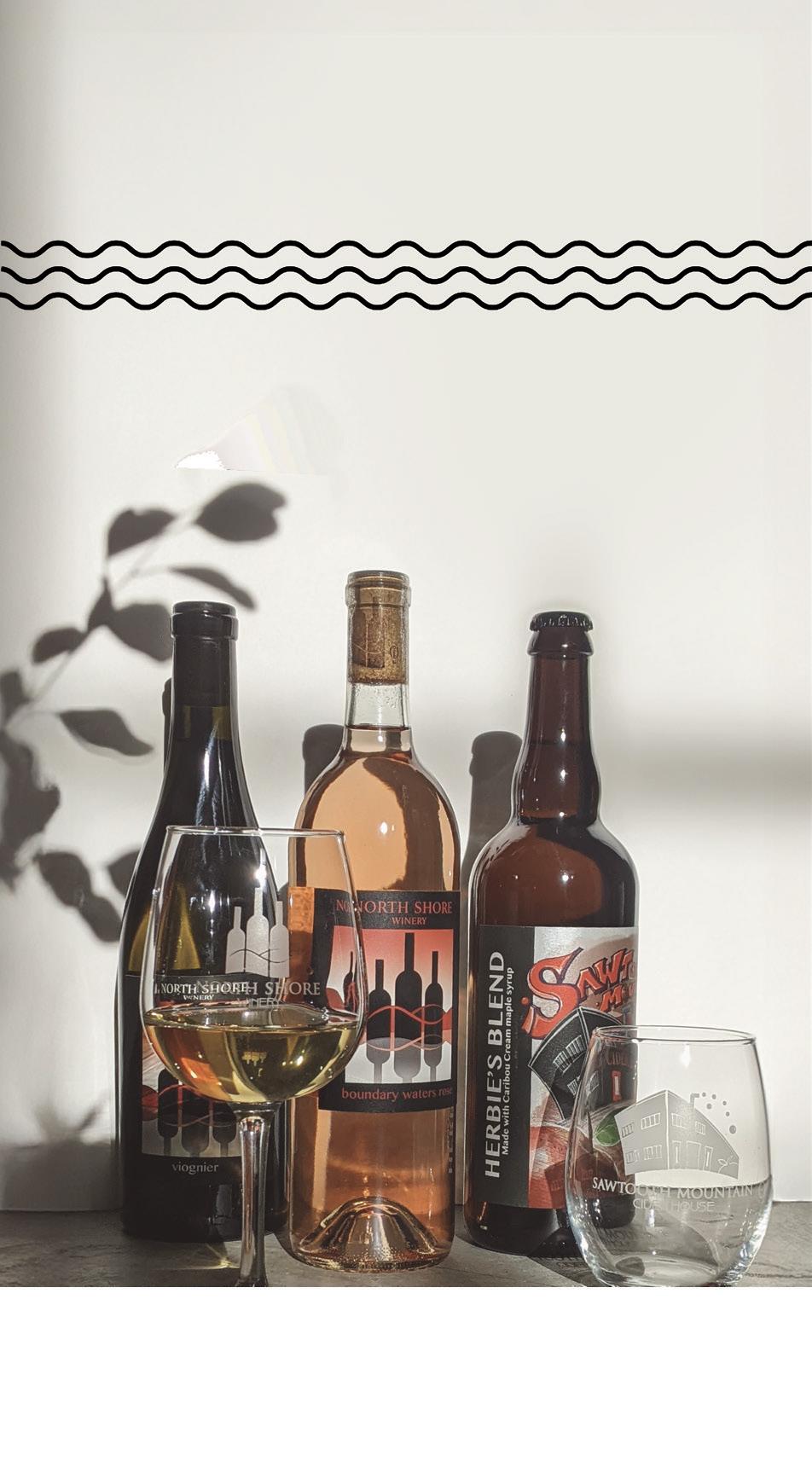



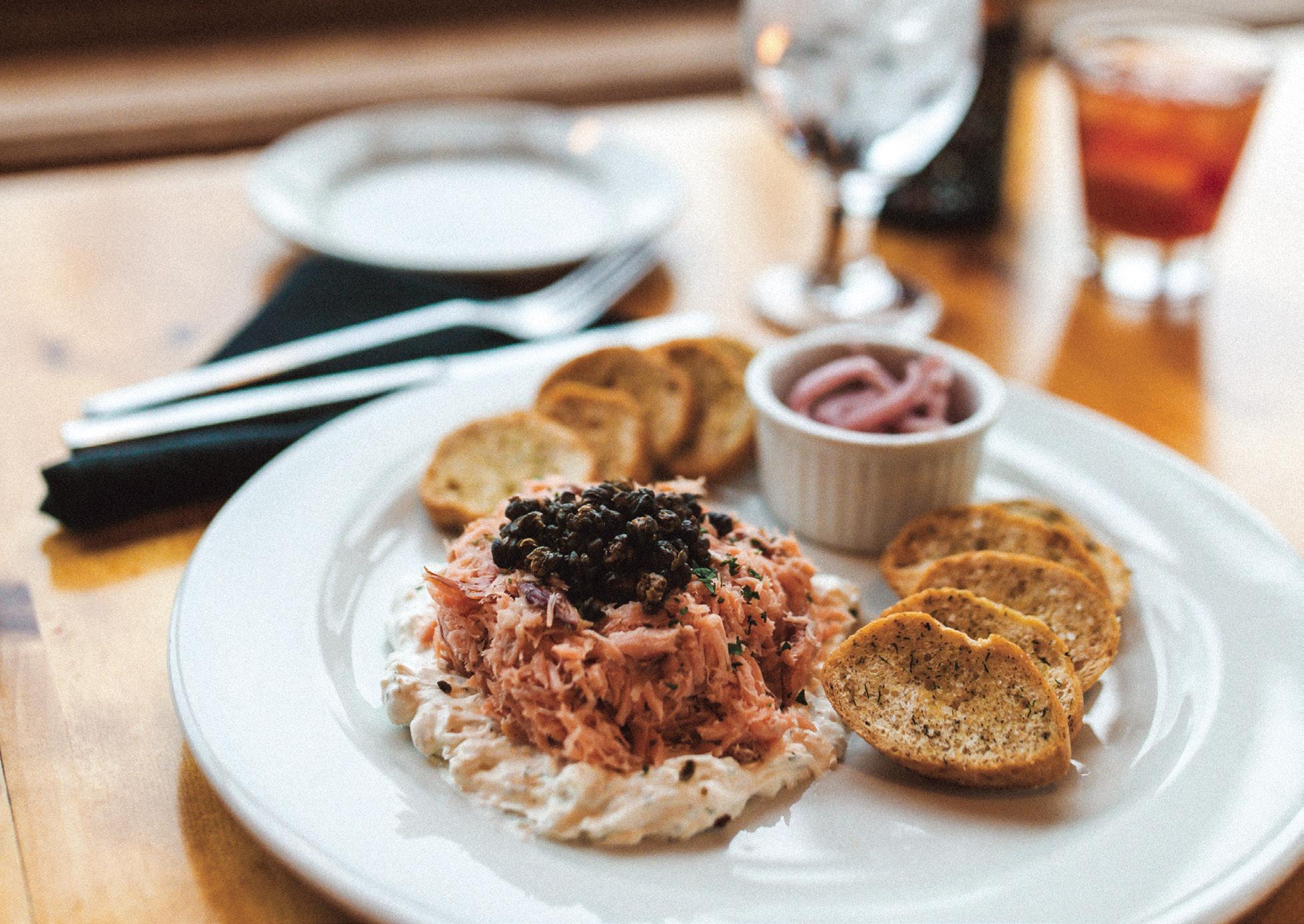
The Cove Point Lodge Dining Room is open to the public for reservations during the summer and fall and has a wide variety of foods to choose from. | SUBMITTED
with maple syrup and thick-sliced bacon. A Naniboujou lunch may consist of their famous wild rice burger topped with sauteed mushrooms, tomatoes, lettuce, red onion, Swiss cheese, and herbed mayonnaise, or maybe a simple favorite: their homemade French onion soup topped with croutons and Swiss cheese. On your way out, don’t forget one of Nancy’s homemade cinnamon rolls. Dinner in the vibrant dining hall may be a perfectly seasoned cranberry pork tenderloin with mashed potatoes, and Danish cream with raspberry sauce for dessert. Or maybe a spinach lasagna with garlic toast, topped off with a hot fudge sundae.
Naniboujou operates on a seasonal calendar, opening for reservations the third week of May, and remaining open until the third week of October, with a few weekends in February and March available for a winter getaway. May marks the release of Naniboujou’s brand new cookbook, Coming Home to Naniboujou, where you can find many of your favorite recipes to make at home. The wild rice burger and French onion soup are in there, as well as Susie Wallace’s four-layer chocolate pie and their smoked trout pasta. The cookbook is laced with stunning photography and bits of Naniboujou history. You won’t want to miss it.
Situated on more than 3,000 feet of Lake Superior shoreline, Cove Point has been a gathering place since the beginning of time. When Cove Point Lodge was built in 1995, it sought to embrace the history and spirit of the northwoods and Scandinavian loggers and fisherman who were reminded of home. Cove Point Lodge has become a memorable dining destination, filled with natural light and views of Lake Superior. The Great Hall boasts a large stone fireplace, and the entire lodge is warmly decorated with rustic wood and Scandinavian touches.
Guests will enjoy a complementary Scandinavian continental breakfast when they lodge at Cove Point, consisting of yogurt, granola, and fresh berries, as well as cheese and salami, hard boiled eggs, and pickled beets. They also serve pickled herring, smoked salmon spread, lingonberries, and more. The Lodge Dining Room is open to the public for reservations during the summer and fall, and has a wide variety of foods to choose from. Lighter options include fish and chips, or a chicken sandwich topped with char-grilled applewood smoked bacon, artisan greens, tomatoes, white cheddar

Cove Point Lodge is a memorable dining destination, filled with natural light and views of Lake Superior. | SUBMITTED
cheese, and garlic aioli, and served on a brioche bun. You can also try their pan-roasted salmon, North Shore stuffed walleye, or Swedish meatballs. For vegetarian options, Cove Point has a grilled tempeh bowl with wild rice, garbanzo beans, avocado, red onions, carrots, cucumbers, and cherry tomatoes, topped with lemon tahini dressing, or try their Lucca pasta with bell peppers, red onions, and creole cream sauce.
All rooms at Cove Point are lakeside, and the grounds provide an idyllic landscape, perfect for a relaxing stay and a memorable dining experience. There are many opportunities to enjoy the lakeshore while you are at Cove Point Lodge. Mickey’s Fish House is a building original to the property—a fish house—that has been converted to a multiuse space. Mickey fished the cove, and now his fish house is a place to watch the sun rise, read a book, or just stop by on your way out to the rocky outcrop that forms the cove.
Naniboujou Lodge & Restaurant and Cove Point Lodge are two favorite North Shore locations, both for their beauty and for the food they serve.

By Hartley Newell-Acero
The acronym “WFPB” may look like a jumble of letters to most people, but to the members of the American College of Lifestyle Medicine, it spells out an important component of better health. This professional medical society is committed to the prevention, treatment, and reversal of chronic, non-communicable diseases. They do this by helping people make therapeutic changes to their lifestyle. One of the most valuable interventions that they recommend is the adoption of a Whole-Food, Plant-Based (WFPB) diet. Extensive scientific evidence supports this eating pattern as a way to prevent and treat obesity, Type 2 diabetes, heart disease, and some forms of cancer.
To gain these health benefits, a WFPB diet emphasizes:
Increasing the consumption of a wide variety of vegetables, fruits, whole-grains, beans, legumes, nuts, seeds, herbs, spices, and water.
Decreasing the consumption of sugary drinks, processed meats (like sausage, bacon and deli meat), processed snacks (such as chips, pretzels, cakes, pastries), candy, dairy (especially high-fat types with added salt and/or sugar), red meats, poultry, and eggs.
People often wonder if a plant-based diet can provide complete nutrition. The answer is a resounding yes. Take protein for instance. It’s necessary for our bodies to build, maintain, and repair our tissues. Protein is made from amino acids. Some amino acids can be produced in our bodies, but others we have to get from the foods we eat. Amino acids are found in animal-based products, but they are also abundant in plants. Just like consuming too little protein is hazardous to our health, so is consuming too much. When animal-based products make up the majority of someone’s diet, there’s a risk of over-consumption. A diet with excess protein can increase the risk of osteoporosis, cancer, impaired kidney function, heart disease, and weight gain. A WFPB diet doesn’t lend itself to protein over-consumption. By eating a variety of grains, legumes, and vegetables, we can easily get all the protein we need. As an added bonus, we’re provided with more vitamins, minerals, phytonutrients, and fiber, while minimizing the saturated fat that contributes to heart disease.
Calcium is another nutrient that people often wonder about when considering a plant-based diet. Humans need calcium for strong bones and teeth, to regulate muscle contractions, and to ensure that our blood clots normally. While dairy products can be excellent sources of calcium, they aren’t the only ones. Plants absorb calcium and other minerals through their roots from the surrounding soil. Animals then eat these plants and take in those minerals. We can cut out the middle-man (middle-cow?), go directly to the source, and get plenty of calcium, and other nutrients, from plant-based sources.

Dip, Wade, then
Eating a whole-food plant-based diet isn’t an all or nothing proposition, and it’s not a shift that has to be made all at once. Start where you’re comfortable and just “dip your toe in.” Perhaps you try a new plant-centered recipe, or take a recipe you already like and experiment with adding more veggies, fruits, whole grains, or beans to it. Next week, try another, and so on. After you’ve dipped your toe in, you might want to wade in a little deeper. What if you chose the meal category (breakfast, lunch, or dinner) that you think will be easiest for you to modify, then picked two or three recipes from that


category to experiment with? When you’ve built up your repertoire and feel more confident with your chosen meal category, add another category. Soon, you’ll be comfortable preparing all sorts of WFPB foods, and you’ll be ready to dive into an ever-increasing plant-based diet.
Keep in mind:
Any and all movement toward a WFPB eating plan is positive. You don’t have to be 100 percent vegan, 100 percent of the time, to benefit from incorporating more plant foods into your life.
That said, the further down the plant-

based path you get, the more impact it will have on your health.
Remember the “whole food” part of WFPB. Whole foods are mostly unrefined and close to their original form. It is possible for a food to be plant-based, but not a whole food. There are many products that trumpet their “plant-based” ingredients but are so highly refined that there isn’t much nutrition left in them.
Make changes that you can sustain, and tailor them to your life. There is no one way for a WFPB pattern of eating to look. It can be adapted to fit your individual needs, preferences, and cultural heritage.



By Gord Ellis
This spring, I’ll have been a steelhead angler for 50 years. My very first steelhead—a lake-run form of rainbow trout—was hooked and landed when I was 12. That began an obsessive journey that continues to this day. Luckily, I’ve been able to chase these fish in a part of the world that offers both a variety of rivers and a great fishery. The fishing only improved when the limit for steelhead was reduced from five fish to one between Pigeon River and Marathon. As a member of the committee that developed the regulation, I felt in my heart the fishery would be secured for generations to come.
However, Mother Nature has a way of changing the script.
In 2023, I was steelhead fishing a river east of Nipigon with my father, Gord Sr., and conditions were perfect. The water was right, the temperature was great, and the steelhead should have been running. Yet we fished hard and never touched a single trout. Other anglers on the river had similar experiences. When a steelhead was finally hooked by another angler, I stopped and watched. This was prime time in early May, and that was the only fish caught all day. This river runs into Nipigon Bay and traditionally has had an excellent spring run of steelhead. However, over the past three years, the fishing has been noticeably slower. This trend has also been seen on other classic freestone rivers east of Nipigon. It all might be written off as just a blip, but the spring of 2024 was even worse. The news is even more dire for steelhead just one bay to the west of Nipigon.
Black Bay, nestled between Nipigon Bay to the east and Thunder Bay the west, is unique. Black Bay is mostly shallow and milky, with suspended particulate giving the north end of the bay a brown hue. Historically, Black Bay was a thriving warm-water fishery, with walleye, smallmouth bass, perch, and pike making up the main part of the fishery. Commercial fishing in the 1950s led to the collapse of the walleye fishery and then the perch fishery. While the warm-water fishery was at a low point, the steelhead thrived. All the spawning tributaries into Black Bay, which include Coldwater, Wolf, Black Sturgeon, and Portage Creek (among others), had robust runs of steelhead for years. For much of the ‘90s and early 2000s, the Wolf River and Black Sturgeon were my go-to steelhead spots on Superior’s north shore. These riv-


ers were a little closer to Thunder Bay than those east of Nipigon, and the Black Bay fish were often big. When the commercial fishing stopped in Black Bay about 15 years ago, a change began: perch and walleye started to rebound. Although sport walleye fishing is closed on the north end of the bay, perch anglers began to tangle with more marble eyes—many quite large.
At the same time, numbers of steelhead in all Black Bay tributaries began to drop at a precipitous rate. This decline can be seen clearly in the results of a decades-long study of Portage Creek. This creek has been closed to most public sport angling for many years, as it is largely surrounded by private land and posted. However, a long-term, cooperative study has been in place on the river, using mark and recapture of adult steelhead to learn about repeat spawning, growth rates, population dynamics, and year-class strength. In about 2003, the steelhead spawning population in Portage was more than 2,000 fish. In 2007, the spawning population had dropped a bit but was holding steady. By 2010, the number slid to around 700 fish. In 2020, the population fell off a cliff—barely 200 spawning adults remained. Keep in mind, this creek has seen no harvest in nearly three decades.
And there’s more: Since 1991, there has been a partnership between the Ontario Ministry of Natural Resources and the North Shore Steelhead Association to monitor steelhead populations on the western side of Lake Superior within Ontario. Steelhead anglers involved in the project record the length, sex, and any identifying marks of the fish. They also take a scale sample and place it in an envelope. In some tributaries, fish are tagged and clipped. With this data, biologists can determine the age of the steelhead, assess how many times a fish has spawned and, through mark and recapture, estimate population numbers.

The results for 2024 are sobering. The Cy press River, once one of the premier rivers on the north shore, has an estimated 770 steelhead. The MacKenzie River, a large waterway located about 30 km east of Thunder Bay, has an estimated 239 fish. Portage Creek, which was down to 200 fish in 2020, slid to a paltry 39 in 2024.
The rivers that fared best are found within the city of Thunder Bay. The north branch of the Neebing River has an estimated 906 adult spawners, while the McIntyre River has 2,378. However, both rivers are down substantially from historic highs. For instance, in 2022, the McIntyre had more than 5,000 adults in the spawning run. So, the run has dropped precipitously in just two years.
Yes, this is all a little gloomy if you love wild steelhead. Their numbers along the North Shore are down across the board. There has been a notable increase in native, warm-water species like pike, walleye, perch, and bass in Black Bay, Nipigon Bay, and even Thunder Bay. Are the warm-water fish impacting the steelhead smolts through predation in the estuaries? The increasingly sporadic spring runoff and very hot summers are also a concern. These are freestone rivers that all but dry up during a drought. There have been recent summers when I could walk across the Jackpine or Cypress and not get my feet wet. It just seems to be a perfect storm.
Personally, I don’t kill wild Lake Superior steelhead and haven’t for some time. With numbers this low, every fish is important. Rainbow trout are a resilient species, and they have made Lake Superior home for more than a century. Hopefully, they will find a balance in the big lake and continue to provide exciting fishing and great memories for years to come.
Losing them would be a tragedy.
GPS-powered walking & driving tours, trails and attractions!


SAVE
MAY 2025 By Deane Morrison, MN STARWATCH

In May brilliant Jupiter sinks into the sunset, ending a months-long guest starring role with the bright winter constellations. Those, too, are disappearing into the sun’s afterglow.
But Mars lingers, spending the last days of May on a course toward Regulus, the brightest star in Leo, the lion. Mars is getting pretty dim, but you can locate it right below the moon at nightfall on the 3rd. The moon revisits Mars on the 31st, when the planet is rather low in the west.
Brilliant Arcturus, the brightest star in the kite-shaped constellation Bootes, the herdsman—and also the brightest in the northern hemisphere of sky—is climbing in the southeast to south. In the northeast to east, Vega, which is almost as bright as Arcturus, also climbs steadily throughout the month. Vega, in the small constellation Lyra, the lyre, is part of the large Summer Triangle of bright stars.
To find Arcturus, just follow the curve of the Big Dipper’s handle. Then continue that curve to Spica, the sole bright star in Virgo, the maiden. Just west of Spica you’ll see a somewhat dim, irregular, four-sided polygon of stars. This is the constellation Corvus, the crow.
In the morning sky, Venus and Saturn will be visible very low in the east at the start of twilight, beginning in mid-month. Unfortunately, the sun is rising right behind them, so the window for seeing them is short. You may catch dim Saturn to the lower left of a waning moon on the 22nd. The next morning, a thinner moon will hover above Venus, which is bright but barely above the eastern horizon.
May’s full moon arrives in midday on the 12th. It won’t be up then, but be sure to enjoy it as it rises in evening twilight on the 11th, or about an hour later on the 12th.
The University of Minnesota offers public viewings of the night sky at its Duluth and Twin Cities campuses. For more information on Duluth, visit: d.umn.edu/planet.


BY JOE SHEAD
WHY GO: Micmac Lake is located entirely within Tettegouche State Park. As such, you don’t need a fishing license to fish it. The park rents four cabins along the lake that house from two to six people. A canoe is included with a cabin rental, which is good because it’s at least 1.7 miles to get to the cabins, so you don’t need to bring your own canoe. Canoes can also be rented without a cabin rental. The lake has a high-quality northern pike population. Pike are both abundant and grow large.
ACCESS: There are a couple ways to get to Micmac Lake. The shortest distance is a 1.7-mile trail from the trailhead on Lax Lake Road. This trail is shorter and open to bike use, although there are some hills. To reach this trailhead from Silver Bay, go west on Penn Blvd. until you hit Lax Lake Road. Travel north on Lax Lake Road 5.8 miles to the parking lot on your right. The longer way to get there is from the trailhead within the park near the primitive group camp. This trail goes north of Nipisiquit Lake and wraps around the north side of Micmac to the west side of the lake. This trail is 3.5 miles long and bikes aren’t allowed. You can reserve the century-old cabins online if you’d like to stay the night. Cabins are open year-round, and they share a communal bath/ shower building. Cabins don’t have running
water, but water jugs are provided so campers can get water from a hand pump or the shower building. The cabins have a two-burner cooktop, a mini fridge, cooking utensils, a screened porch, and a wood stove with firewood. There’s also a lodge for day use, including picnic tables, a screened porch, and two fireplaces. You can rent a canoe for $25 at the park headquarters. It comes with paddles and life vests.
VITALS: Micmac Lake is 136 acres with a maximum depth of 20 feet. With only two gamefish species present, the lake has a very simple fish community.
GAME SPECIES PRESENT: Northern pike and yellow perch.
NORTHERN PIKE: Northern pike are the primary management species. “The pike populations always look pretty good,” said Matt Weberg, Finland area fisheries supervisor. “It checks all the boxes for what we consider to be a quality fishery.” He said not only are pike abundant, but they grow large, which is an unusual combination. He said the average pike measures about 24 inches, and the latest DNR survey turned up fish up to 36 inches. Historically, DNR surveys have consistently found pike over 30 inches. The abundance of perch, combined with suckers and golden shiners, provides a plethora of food for pike. “If you like



By Frank Bures
Minnesota Historical Society Press, 2025, $24.95
Pushing the River by Frank Bures is a thrill ing journey of true canoeing tales, from a har rowing escape during the 2011 Pagami Creek Fire to supernatural encounters in Quetico Provincial Park. Bures also tells the history of the lost Paul Bunyan Canoe Derby—an annual 450-mile race run on the Upper Mis sissippi in the 1940s and ‘50s—and pays tribute to Indigenous racers and builders who shaped modern canoe racing. This is a mustread for adventurers and history buffs alike.
Breana Johnson

By Molly Beth Griffin
Minnesota Historical Society Press, 2025, $18.95
Rings of Heartwood explores nature’s transformations through poetic snapshots of frogs, ferns, snakes, and more. Author Molly Beth Griffin mixes scientific detail with clear, thoughtful verse, helping kids understand that growth—like a tadpole growing legs, or a snake shedding its skin—can be both exciting and hard. Claudia McGehee’s rich illustrations add wonder to every page. This beautiful children’s book encourages readers to embrace change, just like the woodland creatures they meet.— Breana Johnson

By Jay Gabler
Reedy
Press,
2025, $18
Jay Gabler’s 100 Things to Do in Duluth Before You Die is a fun, informative guide to Minnesota’s Zenith City. From harbor cruises and historic theaters to craft beer and delicious eats, Gabler highlights Duluth’s charm with insider knowledge and local flair. Whether you’re a first-time visitor or a longtime resident, this entertaining bucket list makes exploring the city’s art, industry, and natural beauty feel like a brand-new adventure.
Breana Johnson




By Zhaawanoogiizhik / Sam Zimmerman Gitchi Diindiisi
I was telling niimaamaa (my mother) recently how much I have missed the diindiisiwag (blue jays) visiting me. She reminded me of their favorite baaganag (nuts) and seeds, asking if I had any. Sure enough, after mixing up some feed and filling the bird feeders, three of them arrived within a day to fight with a misajidamoo (grey squirrel). Watching their personalities is something that brings me such joy.
After a long biboon (winter) on the North Shore, I always look forward to ziigwan (spring) and niibin (summer)—when the diindiisiwag (blue jays) return with their energy and shrill cry. I also enjoy encountering them when I am up in Gichi-onigamiing (Grand Portage) walking along Hat Point, hearing their cries echo through the woods.
Follow my studio on Facebook and Instagram @CraneSuperior or if you have ideas for a North Shore painting, you can email me at: cranesuperiorstudio@gmail.com.










By Elle AndraWarner
If it hadn’t been for the inaccurate, error-laden Mitchel Map of 1755, a large chunk of northeastern Minnesota—including Duluth and Grand Marais—might have become part of Canada.
So, what was the Mitchell Map, made 270 years ago? At the time, it was the most comprehensive, detailed map of North America. It was created by Virginian-born Dr. John Mitchell, who was neither a geographer nor a mapmaker. He lived in England and drew the map using reports, records, and archives.
Printed on eight sheets and measuring a whopping 4 feet, 6 inches by 6 feet, 5 inches (136 cm x 195 cm), the Mitchell Map was used by both British and American peace negotiators in developing the Treaty of Paris (1783), which ended the American Revolutionary War (1775-1783) between Great Britain and Britain’s group of Thirteen Colonies, which wanted to break away from British rule and become the United States of America. By this treaty, the U.S. was officially recognized by Britain as a free, sovereign and independent nation.
The Treaty of Paris also attempted to set the boundary lines between the U.S. and eastern part of the future Canada, known then as British North America (BNA). However, early negotiations were somewhat chaotic. One crazy idea suggested by U.S. negotiator Benjamin Franklin was that Britain simply give all of BNA to the U.S. Even more surprising, the British negotiator agreed. However, Great Britain ultimately rejected the idea.
Major problems existed with both the map and treaty. The map had a distorted shape for Lake Superior. An island named “Phelipeaux” didn’t exist. The mysterious Long Lake was nowhere to be found. Locations were inaccurate, and the Lake of the Woods was misshaped. Plus, the language of the treaty was confusing, like which river route was the treaty’s “water communication” to the Lake of the Woods? Or where was the treaty’s “northwesternmost” point on Lake of the Woods? And the Mississippi River—which was to be the treaty’s western boundary of the U.S.—was wrongly shown as being west of the Lake of the Woods.
In his book Minnesota’s Boundary with Canada: Its Evolution Since 1783, author William E. Lass writes, “Had their knowledge of geography been accurate, they would almost certainly have brought the boundary through Lake Superior to the St.

faulty Mitchell Map of 1755 was created by Virginian-born Dr. John Mitchell, who was neither a geographer nor a mapmaker. | PUBLIC DOMAIN
Louis River... In effect, the use of Mitchell’s map saved the Mesabi and Vermilion iron ranges for Minnesota…”
It wasn’t until 31 years later, after signing the 1814 Treaty of Ghent that ended the War of 1812 between the U.S. and Great Britain, that a Joint Boundary Commission was established to solve the puzzling boundary issues. One of the British commissioners was the famous fur trader, mapmaker, and astronomer David Thompson, who had already mapped much of Minnesota and Canada for the fur-trading North West Company (NWC).
In his book, Laas writes, “Survey was important because Isle Royale was explicitly named in the peace treaty [Treaty of Paris], which dictated that any boundary through Lake Superior was to stay north of the island…” So, it was that Isle Royale became part of Michigan, even though it was closer to today’s Canada than to Michigan.
The Joint U.S.-British Commission looked at three options for the river route boundary between Lake Superior and Lake of the Woods:
First, the British claimed the boundary river route should be the St. Louis River–Vermillion route, which would have placed much of northeastern Minnesota—including Duluth and Grand Marais—into Canadian territory.

“Treaty of Paris” by Benjamin West portrays the American commissioners. The portrait was never completed because the British commissioners refused to pose. | PUBLIC DOMAIN
Second, the Americans selected the Kaministiquia River, which pushed the U.S. claim into what is now Ontario, north of today’s Minnesota–Ontario border and near present-day Thunder Bay.
Third, there was the historic fur-trading Grand Portage–Pigeon River route. It wasn’t until 1842 that the river route boundary was finalized. That’s when the U.S. convinced Great Britain that the Grand Portage–Pigeon River was the correct “water communication” boundary named in the Treaty of Paris. As a result, the Arrow-
head Region—including Lake Vermillion, Duluth, and Grand Marais—all became part of the U.S. with the signing of the 1842 Webster-Ashburton Treaty.
But there was still a quirky geographical oddity to figure out. By agreeing on the location of the “northwesternmost” point on Lake of the Woods, a chunk of Minnesota ended up being bordered on three sides by Canada—Manitoba on the west and Ontario to the north and east. By land, this Minnesota area, known as the Northwest Angle, is only accessible by going through Canada first.
How come? Well, the Treaty of Paris, which used the faulty 1755 Mitchell Map, spelled out the boundary edge to be at the “northwesternmost” point on Lake of the Woods. The problem was that the map showed the lake shaped as an oval, when in reality it is a huge lake with multiple bays. It took years to identify the correct location of the point. Once agreed by all, the chunk of U.S. land jutting into Canada became Minnesota’s Northwest Angle.
It’s also worth noting that today’s Canada did not come into existence as one nation until British Parliament passed the British North America Act in 1867. It united the colonies of Ontario, Quebec, Nova Scotia, and New Brunswick into the Dominion of Canada. Today’s Canada consists of 10 provinces and three territories.


Beautiful 5 acre parcel, close to town with a private and peaceful vibe. Enjoy the sunny south facing lot on the hillside. Create your build site with selective clearing to open up the Lake Superior view! Power and broadband internet on site! Yearly road association fee to share road maintenance and snowplowing costs.
MLS#6118303 $135,000
LAKE PROPERTIES


DEVIL TRACK LAKE CABIN/HOME SITE
Charming recently renovated cabin with new kitchen, 3/4 bath, Murphy bed and large decks. A mini-split provides year-round cabin comfort. The stunning views, underneath the towering pines, is classic wilderness lake front. Desirable north shore lot is ready to use with new dock with benches.
MLS#6117479 $469,000
LOG HOMEPORTAGE LAKE
Pristine 10 acres, 1700+ feet of Portage Lake shore, unique Mid-Gunflint Trail location. Surrounded by Superior National Forest and BWCA. Beautiful full-log home, 2 bedroom, 1 bath, porch, 2-car garage and gardens. Peninsula, privacy and views. Pristine location on quiet wilderness lake.
MLS# 6118688
$649,000

Five bed, 2 bath home with plenty of room and comfortable spaces. Hardwood floors, fireplace, updated appliances and new mechanical systems. The large lower level has space for projects or rec-room. Large yard and extra garage.
MLS#6115564 $299,000


PORTAGE LAKE LOT - GUNFLINT TRAIL
Direct access to the BWCAW. The lake has limited private land and has the wilderness feel. The large lot boasts 10.75 acres with 818 feet of accessible lakeshore. Nice building sites and dense evergreen forest, with unique fen for wildlife viewing.
MLS#6118643 $239,000
PORTAGE LAKE –MID-TRAIL LAKE LOT
Wilderness serenity surrounds you. Direct access to the BWCAW, or just enjoy it from your deck.
5.13 acre lot, 400 feet of accessible lakeshore, nice building sites amid typical boreal forest landscapes. Huge rock faced cliff guards a pond, deep forest and pristine lake views.
MLS#6118691
$198,900




The “Little Lost Containers” has been crafted with skill to create a unique vacation rental. Situated on a ridge above Lake Superior, it captures magnificent views over Chicago Bay and Chimney Rock. It is all about the view with each room, 3 levels of decks, and the fire circle providing a place to soak in the beauty. Living room includes custom-made furniture that converts to a 2nd bed and the efficient kitchen provides everything for a relaxing stay.
MLS#6118409 $299,900

Temperance Landing, part of the award-winning Bluefin Bay Family of Resorts, is nestled on 1500' of stunning Lake Superior Shoreline. This is the last lot available in the association! Build your log home to match the rest and design the interior to your liking. If you opt into the Bluefin Bay Rental pool your property will be cared for while generating income.
MLS#6117698 $155,000

Imagine the possibilities! This house plus business space could become a hostel or bed and breakfast. Or, live in the house and run your business out of the NE side. Currently it's used as a boarding house. The central location in the Mixed Use zone can't be beat! Bring your ideas!
MLS#6117545 $425,000


Red Pine custom crafted log cabin tucked into a stand of peaceful woods. Easy access to Mid-Trail lakes and recreational opportunities. Enter the home through the light filled sunroom and enjoy the wooded views throughout. Each space has ample windows and the vaulted ceiling gives this home a more spacious feel. Enjoy a fire in the wood stove or let the forced air system do the work for you. One bedroom home plus a loft and a full walkout basement.
MLS#6117406 $399,000


Beautiful Poplar Ridge condominium with views of the Poplar River and Lake Superior! 3br/3ba, with extra sleeping area in the loft.
MLS 6117961 • $499,900
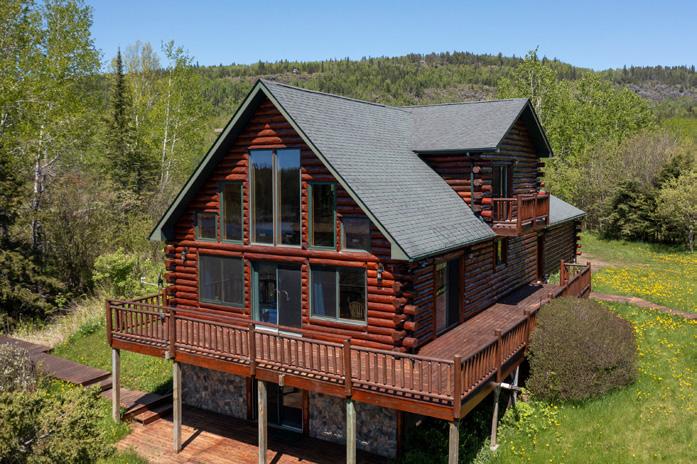

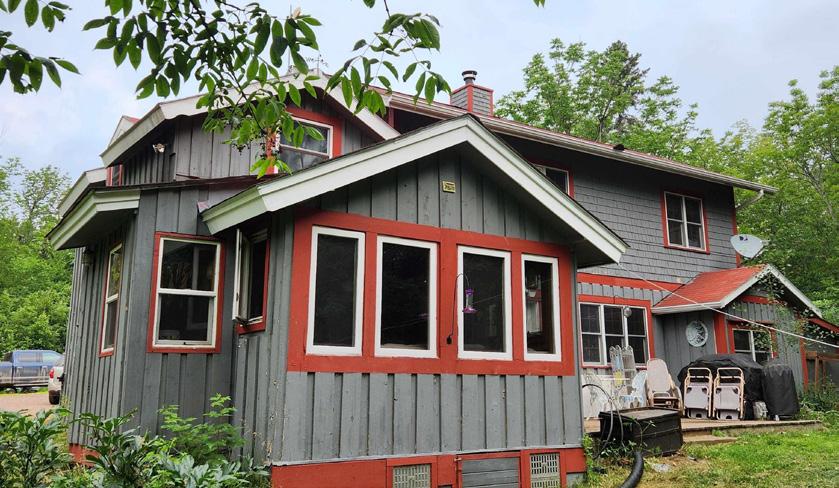
Welcome to your private retreat nestled on 10 acres, with abundant national forest land just beyond your doorstep. This charming 3BR/2BA home offers 1,846sqft of inviting living space.
MLS 6115762 • $425,000


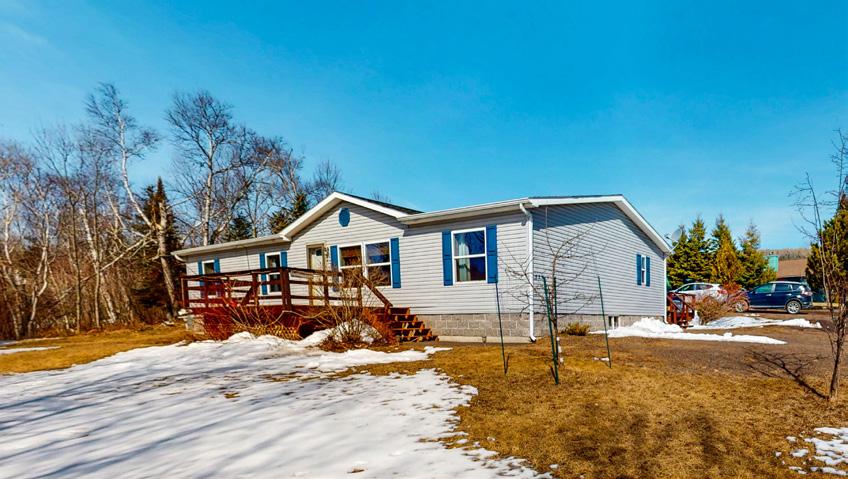
Move-in ready 3br/2ba home in Grand Marais sits on a spacious lot with a private, woodsy setting. Features include stainless appliances, gas fireplace, two decks, and a detached garage.
MLS 6118429 • $339,900
Escape to your own slice of paradise with this stunning 2BR/2BA log home, perfectly situated on 40 acres of natural beauty. Located in Hovland, this tranquil retreat offers the ideal blend of rustic charm and modern comfort. The expansive southern-facing windows provide breathtaking views overlooking the large pond full of wildlife! Step inside to discover a spacious interior with vaulted ceilings, beautiful wood flooring throughout, the loft with two balconies, and the magnificent stone wood-burning fireplace. The attached 2-car garage provides convenient storage space for vehicles, toys, and gear.
Beautiful lot in Lutsen surrounded by maple trees and serene cedar groves, offering the perfect setting for your future home or cabin.Year-round access.
MLS 6118415 • $64,900
Nicely wooded 5 acre lot with Lake Superior views! close to Grand Marais, but far enough away for privacy and peace of country living. Electricity at lot.
MLS 6118382 • $119,900
Top of the world views-Nice build sites with views of Lake Superior! This 5+ acre lot has sunny, southern exposure and great heights. Electricity at lot.
MLS 6118383 • $124,900
This rare 2-acre lot in Grand Marais offers a gentle south slope, simplifying construction, snow removal, and winter access. It features a creek and privacy.
MLS 6118480 • $79,900





It’s all about the lake! This two-story, 4BR3BA retreat provides a blend of Northwoods charm and modern comfort. Lake views galore! Hot tub area just a few steps from the lake.






Exceptional Seagull Lake property with tons of privacy. The property consists of 10.62A on over 480’ of lakeshore with a floating dock, oversized insulated garage and a camper.
6113853 • $539,900
185/187 Sag Lake Trail
Discover this exceptional four-bedroom, three-bath home that is nestled along the scenic Gull Lake, with 467 ft of frontage and approximately 5 acres of land, complete with rock outcroppings, pine trees, stunning views, and plenty of privacy. Ideal for the buyer wanting to enjoy paddling from their dock into the BWCA. This meticulously maintained property features a back-up generator system, attached heated garage, HUGE spacious heated garage, and workshop (including lots of storage & a golf net), along with two charming rustic sleeping cabins.
Looking for a stunning Cascade Beach Road retreat? This Scandinavian inspired 3BR/2BA home on 200’ of Lake Superior shoreline is it! Located in the heart of all Cook County has to offer.
6117163 • $1,295,000












This stunning end-unit Cliffhouse Townhome in Lutsen offers three bedrooms, three baths, and breathtaking views of Lake Superior and the Poplar River. Featuring floor-to-ceiling windows, a walk-out deck, and a private spa room with a jetted tub, it’s ideally located near Superior National Golf Course, the Gitchi Gami Trail, and Lutsen Mountains, blending luxury and outdoor adventure in a serene North Shore setting.












NEW! COZY CABIN ALONG THE BAPTISM RIVER IN FINLAND!
Welcome to the Wilderness in Finland! This two-bedroom cabin will make a great full time home or a getaway just for you! The off-grid system is 100% solar with a backup generator, but still has amenities like fiber optic! Vaulted Ceilings & wood fireplace give you the ambiance of the woods.
Large loft bedroom gives you plenty of room to relax and 19+ acres with 500+ft of shoreline on the Baptism River gives you room to explore! Large
Detached garage for your toys and spacious 3 season porch mean you have everything you need to enjoy the Northwoods! Visit Today! MLS#6118387 $399,000


NEW! ENJOY THE LOG CABIN LIFE IN FINLAND!
Along one of the more serene sections of the Baptism River is 20 acres of boreal forest. Nestled in among those woods is an iconic Northwoods getaway – a square hewn log cabin! All off grid and ready for all the seasons with a screen porch, Fireplace and propane stove! Loft area for sleeping or storage. Nice path to the river invites moments for spring warbler identification, breezy summer strolls, crunchy fall walking, ski down to the winter’s, icy river and explore! George H Crosby Manitou State Park is just down the road. Finland is a great little town, and the Finland COOP is a throwback with everything a person could need. Come relax, realign, escape.
MLS# 6118579
$199,999


NEW! CREATE YOUR DREAM IN SCHROEDER!
This 3+ acre parcel is right in Schroeder, with easy access to the Superior Hiking Trails and Snowmobile Trails. Plan your design to see the Distant Lake Superior views. Explore the nearby State parks or travel inland to one of the many inland lakes! Lutsen Ski Hill and Superior National Golf Course are less than 15 minutes away. Power and Fiber optic are right at the road for easy hookup for when you’re ready to reconnect to the world. Come check out this lot and begin making your dream a reality.
MLS#6118565 $91,000
hot tub, and sauna. Visit Today! MLS# 6118587 $389,900









HOME AT THE END OF THE ROAD, ABUTTING PUBLIC LAND AND CASCADE RIVER STATE PARK! At the end of Birch Dr, quiet and solitude prevail. Sweet views of Gitchee Gummi change from moment to moment, framed by a stately stand of Norway Pines. The home has been lovingly and thoughtfully updated, class-act finishes. 3 bedroom, 2 bath, topnotch kitchen. Light pours into the home. Sensible floor plan provides gathering spaces and holing up for contemplation, crafts or working remotely. Large garage with a dreamy screen porch. Wilderness vibes and wildlife are dominant themes, yet Grand Marais is about five minutes away.
MLS#6117570 $649,000
FUN TIMES AT EAST BAY IN GRAND MARAIS! CLOSE TO ALL THE GOODNESS OF MINNESOTA’S COOLEST SMALL TOWN!
Breathe in the Gitchee Gummi air, Relax, put the urban blues behind ya and chill out. When you are away, the unit is a workhorse earning income! This classy, Scandinavian Modern, 3-bedroom, 2-bath, wellappointed unit is just a stone’s throw from the lake. Everything you need to relax is here from the spacious Living Room with a fireplace to the balcony overlooking Lake Superior. This is the top floor unit - extra peaceful. Nothing to worry about with this property. Use it yourself and let it earn while you’re off doing you. Check it out today!
MLS#6118014 $450,000


LOVELY LAKE SUPERIOR TOWNHOME MINUTES TO LUTSEN MOUNTAINS SKI RESORT! Soak in the Lake Superior views from this End Unit Townhome in Tofte. The unit is next to the stairs leading down to the beautiful Lake Superior ledgerock beach! Pull into the one car attached garage and leave all your worries behind! The kitchen has a breakfast bar and a fun design made for entertaining, open to the elevated dining and living room. The wall of windows in the living room walks out to the main level deck for enjoyment of those amazing views of the Big Lake! The upper level features a primary ensuite, with walk in closet and updated bath. SPECTACULAR lake views from the Deck off the primary bedroom! Two additional bedrooms share a full bath. See everything that this home has to offer!
MLS#6118293 $639,000


SOTSKOGEN IN FINLAND!
MLS#6117872 $225,000 SOLD

BEAUTIFUL CUSTOM HOME ON LEVEAUX MOUNTAIN IN TOFTE!
MLS# 6115360 $549,000 PRICE REDUCED
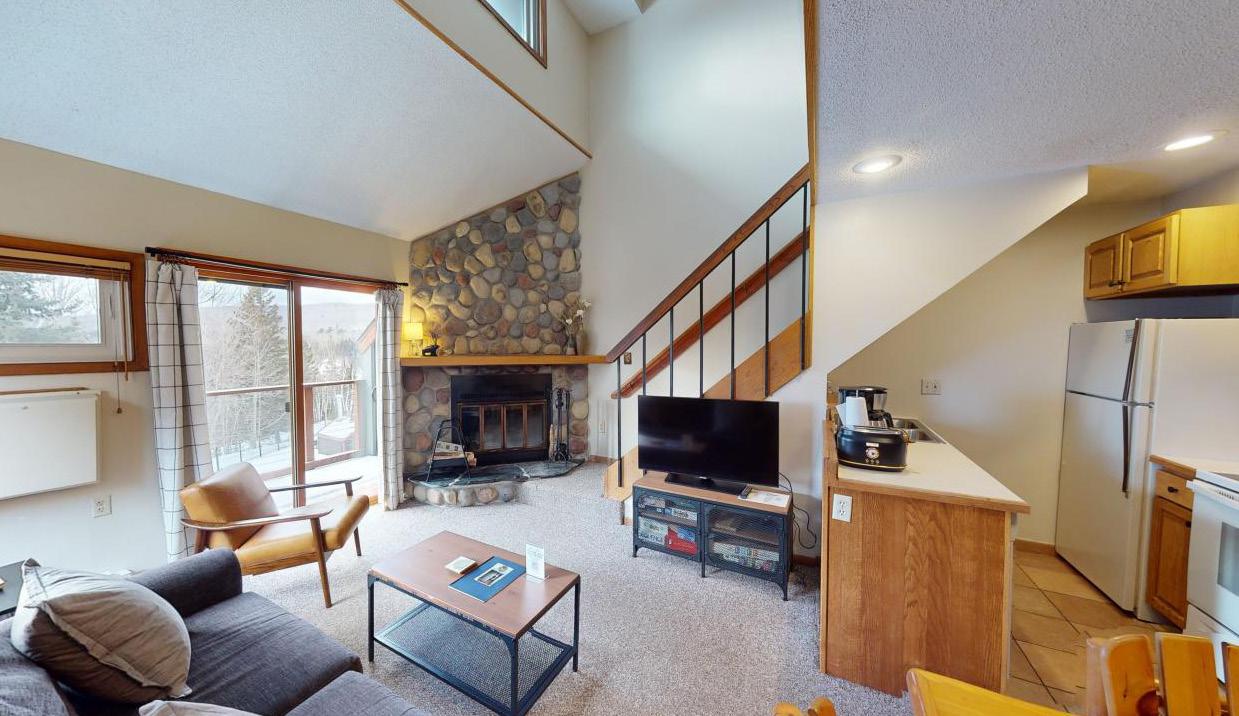

9th Annual Lutsen Block Party June 13th 5-7pm Let Us Show Our Appreciation! LIVE MUSIC! FREE FOOD!



EXPLORE THE WILDERNESS IN FINLAND!
MLS#6113405 $60,000
What a great spot for your vacation getaway cabin!! This lot has great views of Ninemile Lake in the Village at Ninemile planned development. The infrastructure is already there: electricity, shared well and septic, all you have to do is hook up to it. Shared ownership of approx. 1800 ft of shoreline on Ninemile Lake, perfect for Summertime fun!
AFFORDABLE LOT AT NINEMILE LAKE!
Lake view lot ready to build, with 1800 ft of shared shoreline on Ninemile Lake! The Village at Ninemile Lake has all the infrastructure ready to go with shared septic and well, electricity at the lot. County Rd 7 is a year round plowed road and the Association plows the roads within the development! This is a great opportunity to build your dream getaway!
MLS#6113406 $60,000
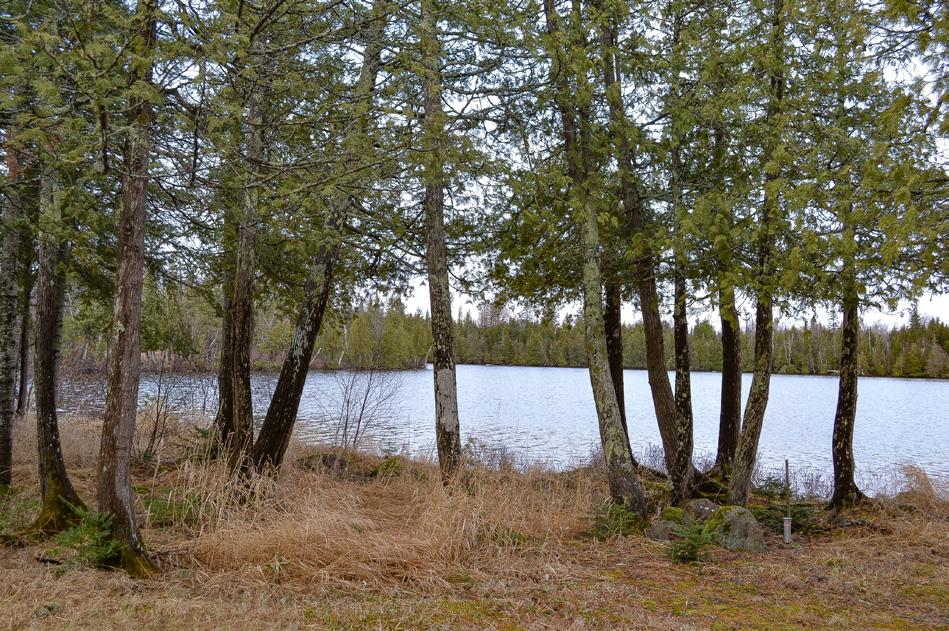
OUTDOOR ENTHUSIAST’S DREAM AT NINEMILE LAKE! Start enjoying your Inland Lake Dream! This lot was created by combining two lots, so it offers plenty of room to build your dream cabin or home with an amazing lake view and direct lake access! Shared Septic System and Well already in place, 1800ft of shared shoreline on Ninemile Lake- all that is missing is you and your plans for a dream getaway!
MLS#6113407 $150,000
11 PLUS ACRES JUST 8 MILES FROM THE CROSS RIVER IN SCHROEDER! You’ve driven by this nice parcel during a Fall leaf color tour on the Cramer Rd, a beautiful area for your getaway cabin! Year round County Rd access, electric and fiber at the road. Level build site, boreal forest for great wildlife viewing! Lots of recreational opportunities just minutes away including fishing, hiking and biking the old railroad grade, or toe dipping in Lake Superior!
MLS#6118380 $79,000
NEW! CREATE YOUR DREAM IN SCHROEDER! This 3+ acre parcel is right in Schroeder, with easy access to the Superior Hiking Trails and Snowmobile Trails. Plan your design to see the Distant Lake Superior views. Explore the nearby State parks or travel inland to one of the many inland lakes! Lutsen Ski Hill and Superior National Golf Course are less than 15 minutes away. Power and Fiber optic are right at the road for easy hookup for when you’re ready to reconnect to the world. Come check out this lot and begin making your dream a reality.
MLS#6118565 $91,000
SAVOR NATURE AT TAIT LAKE! Amongst the Tait Lake Pines in Lutsen, at the end of the road, is this nearly three acre lot. Feels larger as it abuts miles of public lands to the south and dedicated open space to the east. Current owners have provided a good start with clearing, dirt-work preparation and building sites. Great Location close enough to all the fun: skiing at Lutsen Mts, golf at Superior National, paddling the BWCA, hike Eagle Mt. 2 private HOA docks provide access to Tait Lake. Come get your foothold in the cool north, living life in a Lakeland wilderness.

MLS#6116905 $92,500

GREAT OPPORTUNITY FOR PURCHASING OVER 2 ACRES IN THE CITY OF GRAND MARAIS!
You don’t have to give up solitude to live in the city of Grand Marais, this is a perfect fit for a home with a great location. The YMCA and school are within walking distance and just a hop, skip and jump to the Gunflint Trail to access numerous trails for hiking, biking and snowmobiling and MANY inland lakes. Visit today and start your dream of enjoying the North Shore! MLS#6114386 $111,000 PRICE REDUCED
ACREAGE WITH BIG MOUNTAIN AND LAKE VIEWS 10 MINUTES TO GRAND MARAIS
HARBOR! Close to Grand Marais, part of Murphy Mountain, off the Bally Creek Rd. Access road in place. Subdivision possible or keep whole as a dreamy preserve and home site. Abuts miles of public land! Price reflects incredible vibe, views, solitude and grandeur!
MLS#6117131 $400,000



I found a roadside red fox natal den and had the privilege of observing the pups from a distance. I parked on the opposite shoulder of the road and used my car as a photo blind of sorts. The fox kits emerged intermittently for a romp around the den entrance. It was hilarious to watch their antics—often wrestling or play fighting throughout the day. They were always on alert and would dash to their subterranean safety hole at a moment’s notice.— Ryan Pennesi





